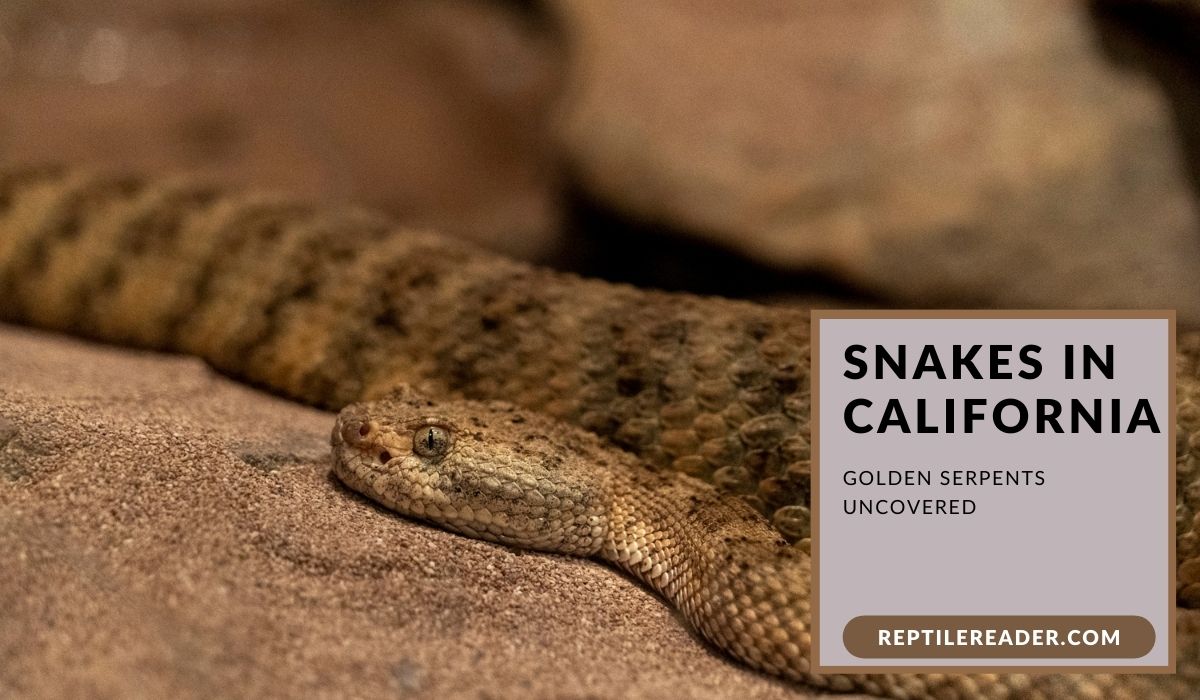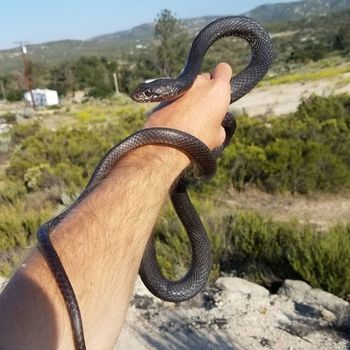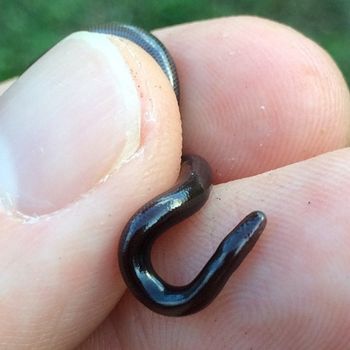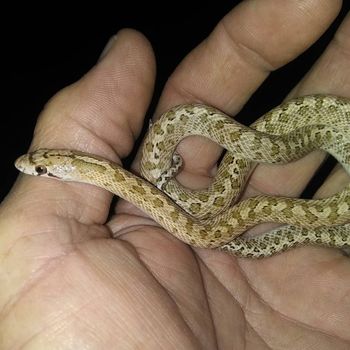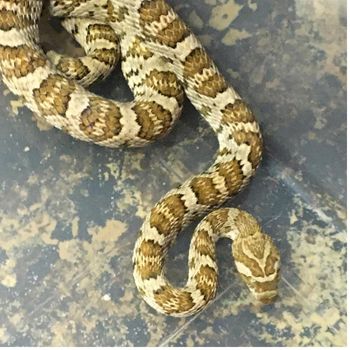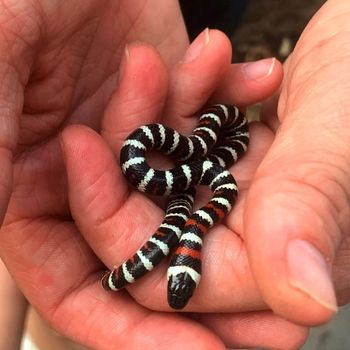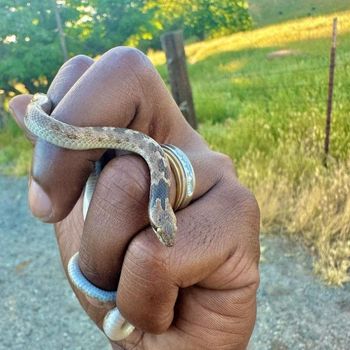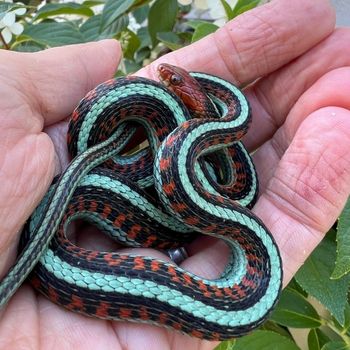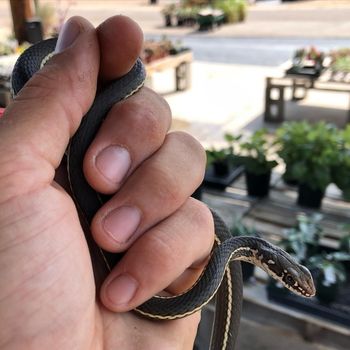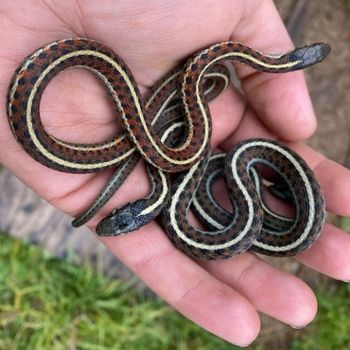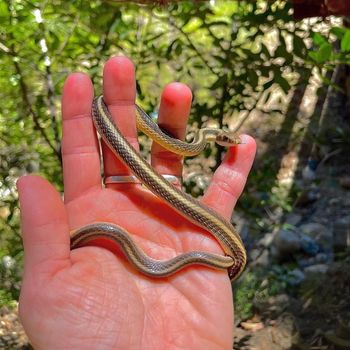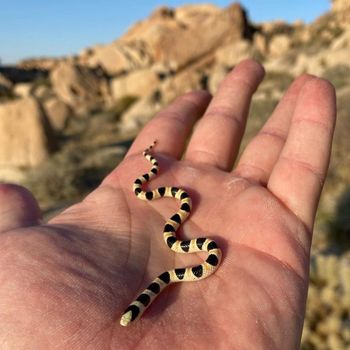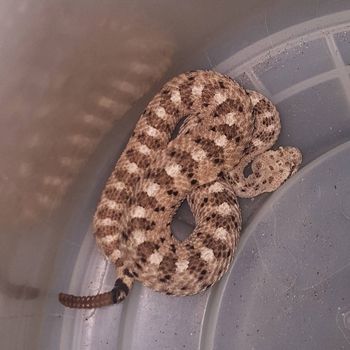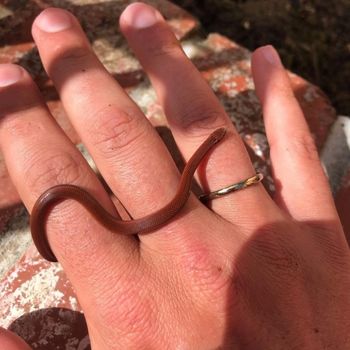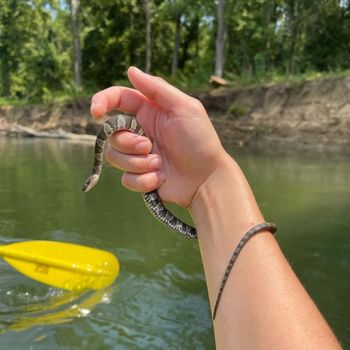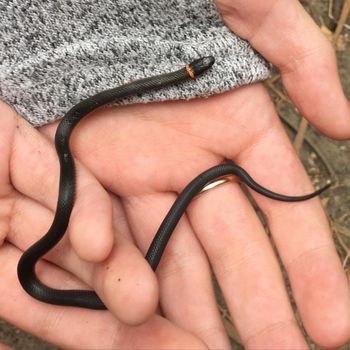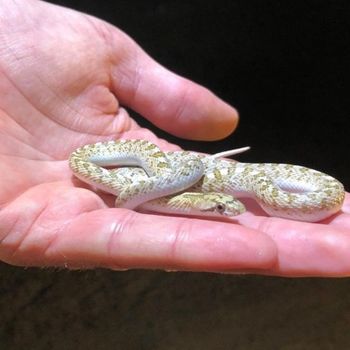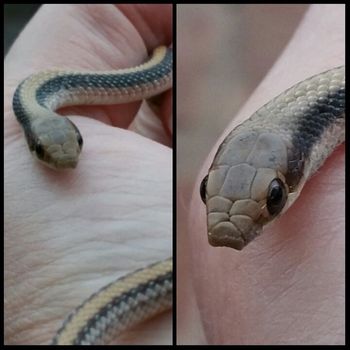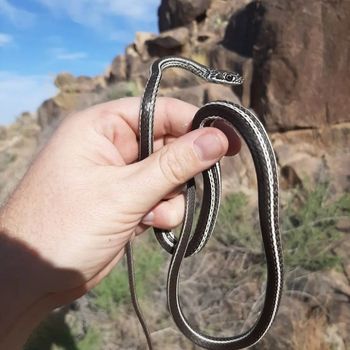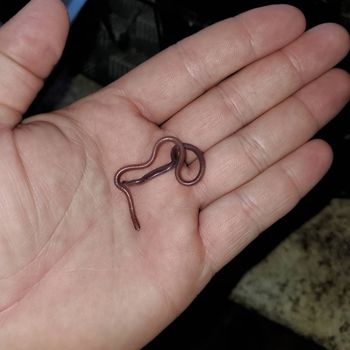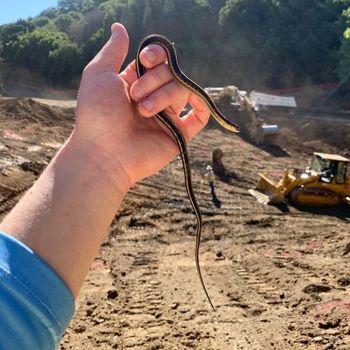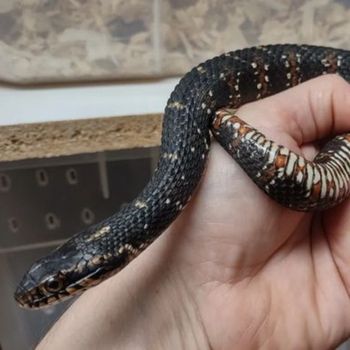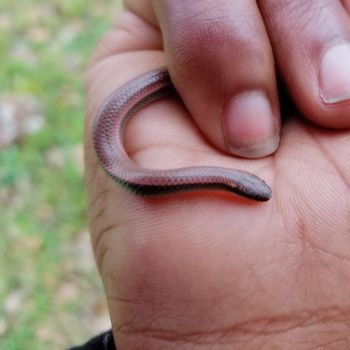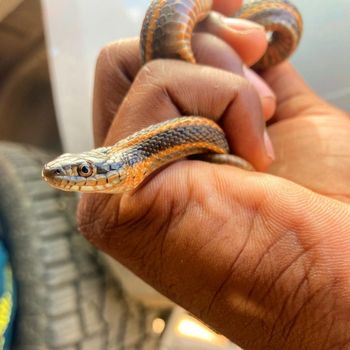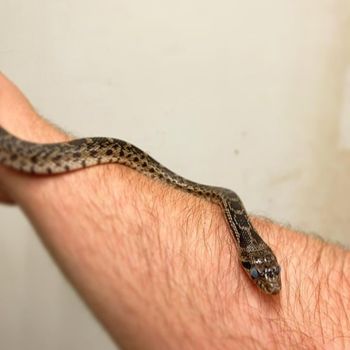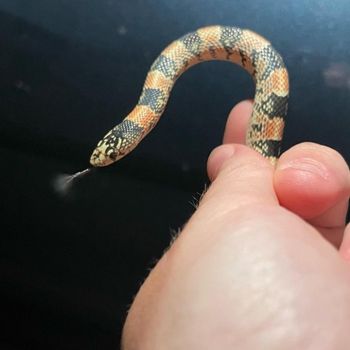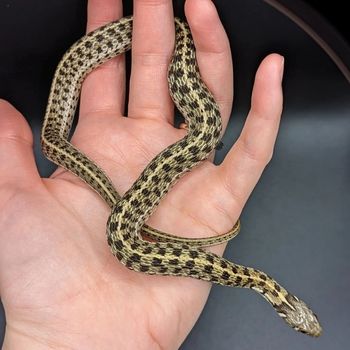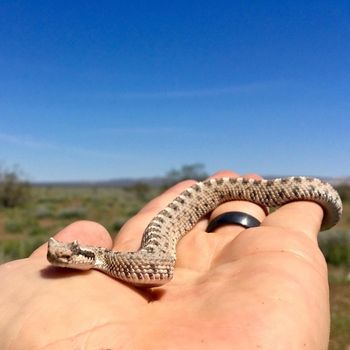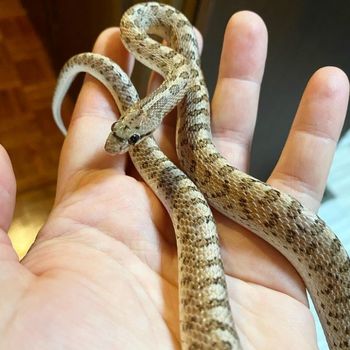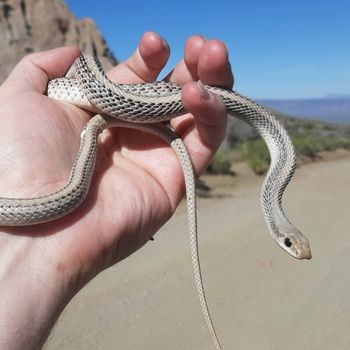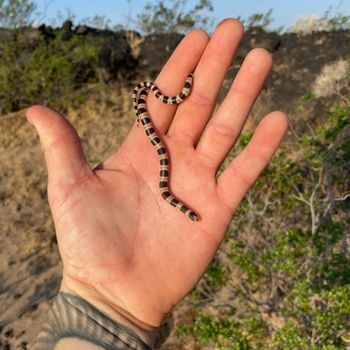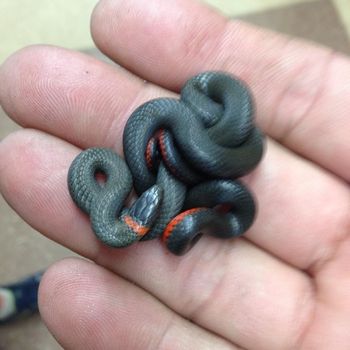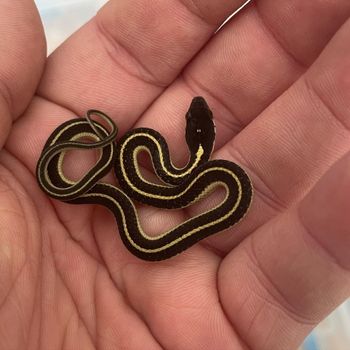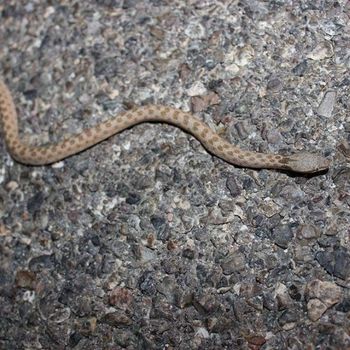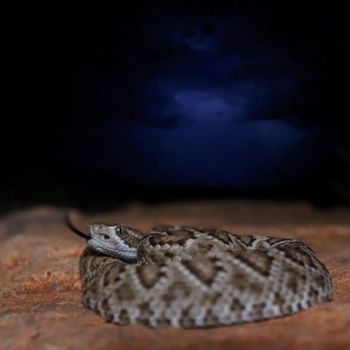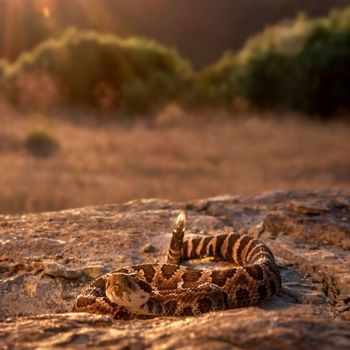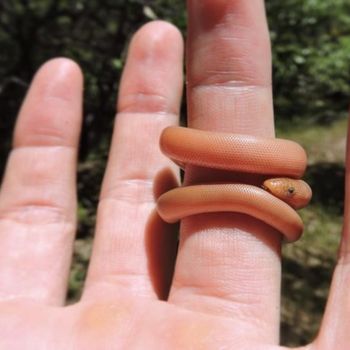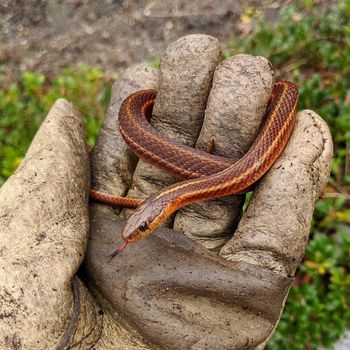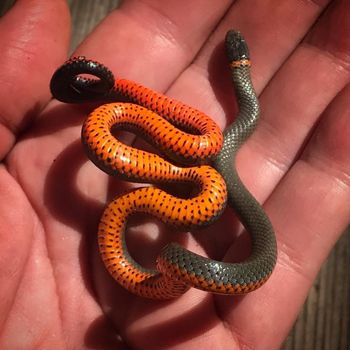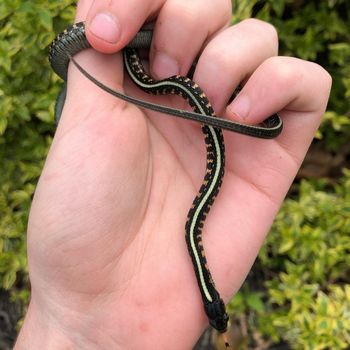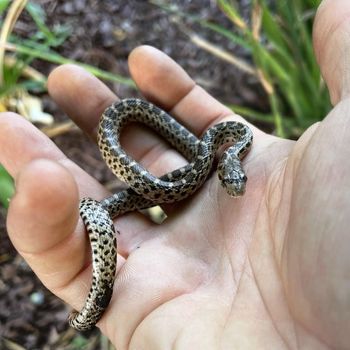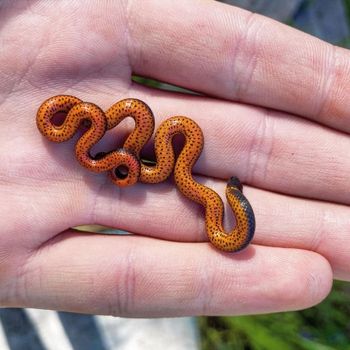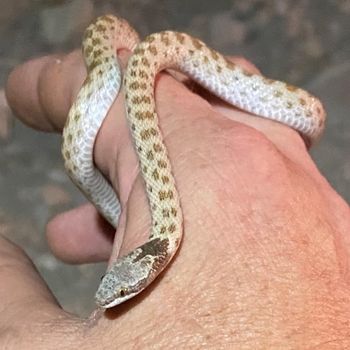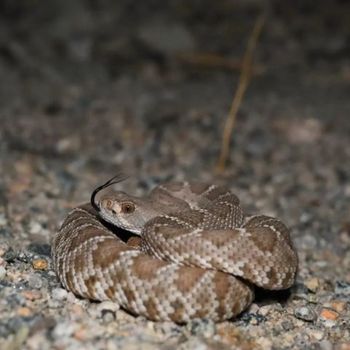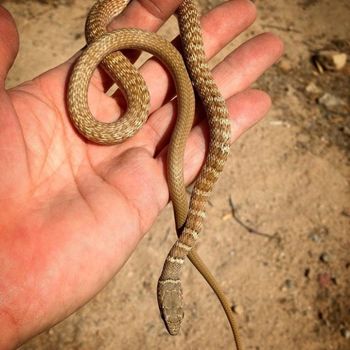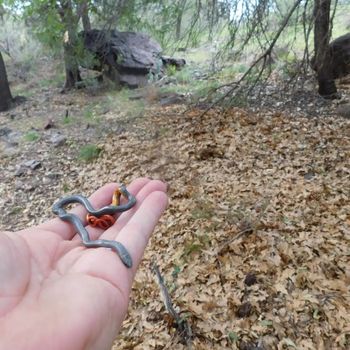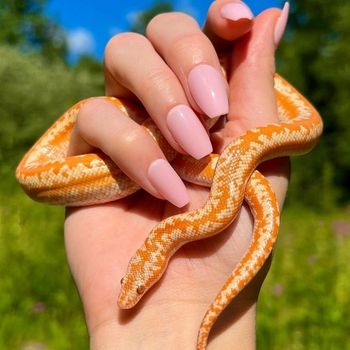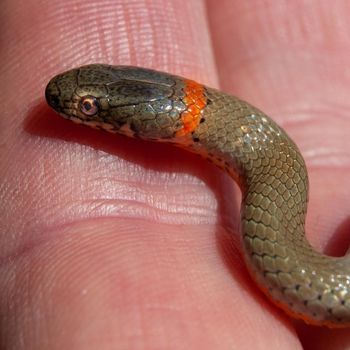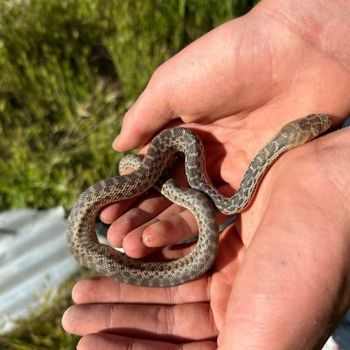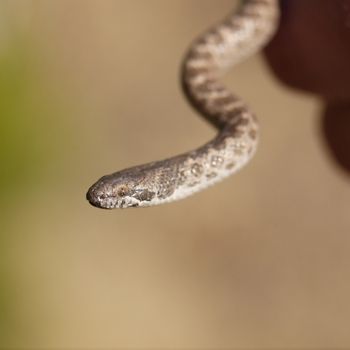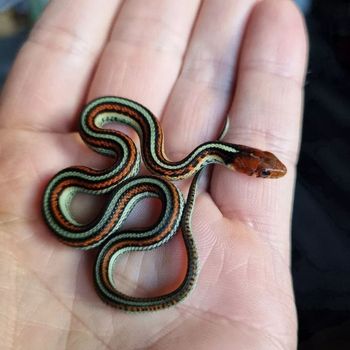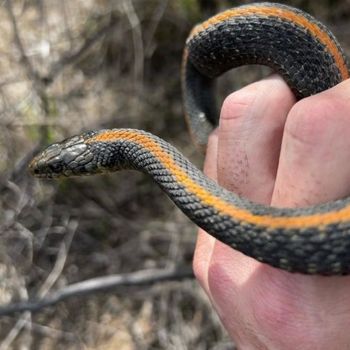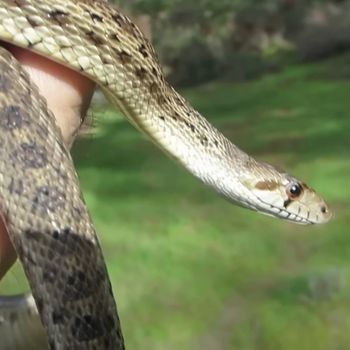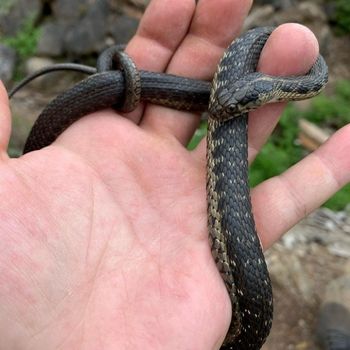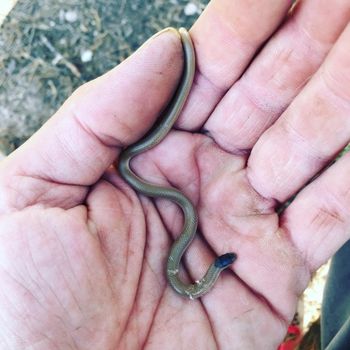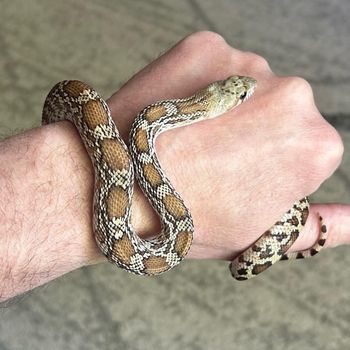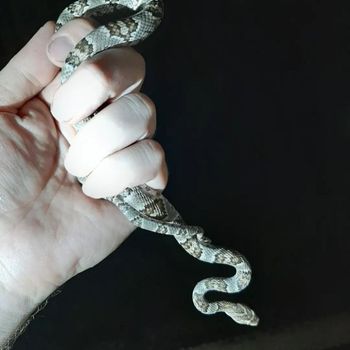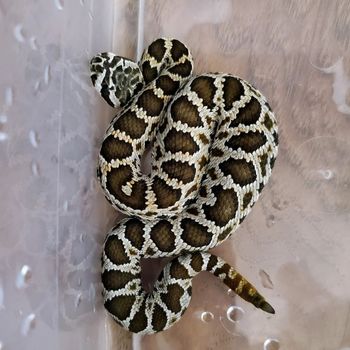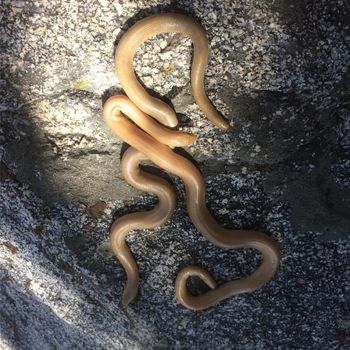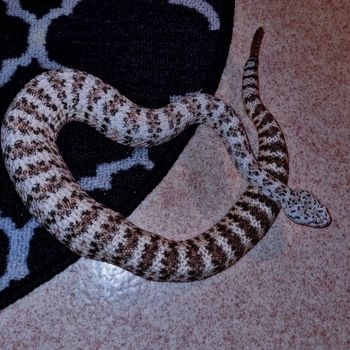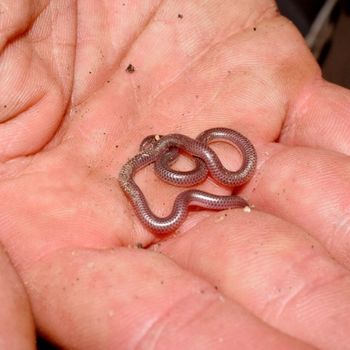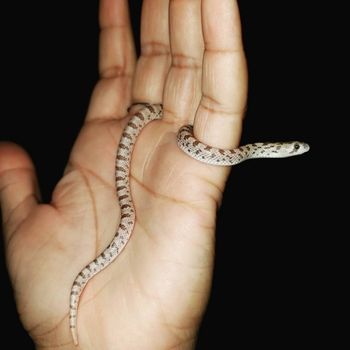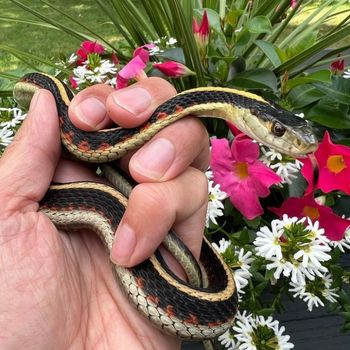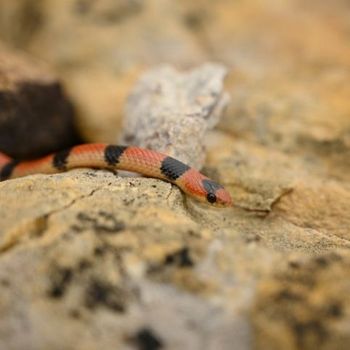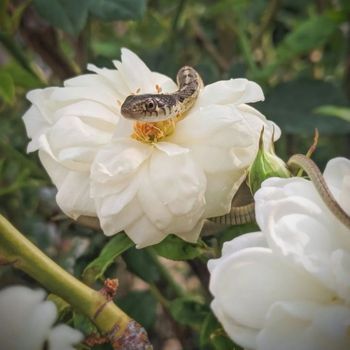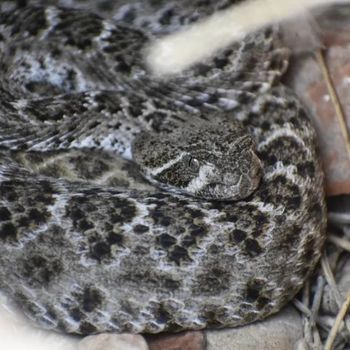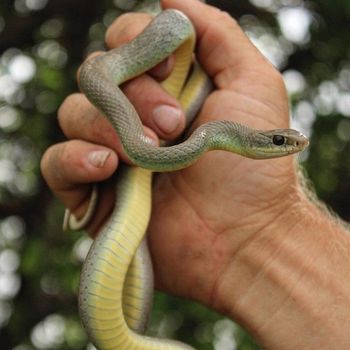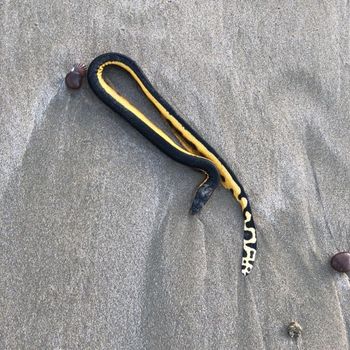Snakes in California: Golden Serpents Uncovered
California is calling all reptile lovers, boasting a whopping 75 species of snakes within its borders. Ready to embark on a slithering adventure in the Golden State?
From the infamous rattlesnakes to the lesser-known ringneck snakes, California offers a diverse range of scaly residents for you to discover. Rest assured, the majority of these serpentine neighbors are more interested in avoiding you than causing any harm.
So, let’s delve into the captivating realm of California’s snakes. Strap on your hiking boots, and prepare to uncover some of the most intriguing reptiles on the West Coast!
| # | Name | Details | Image |
| 1 | Alameda Striped Racer (Coluber lateralis euryxanthus) |
|  |
| 2 | Baja California Coachwhip (Masticophis fuliginosus) |
|  |
| 3 | Brahminy Blind Snake (Indotyphlops braminus) |
| 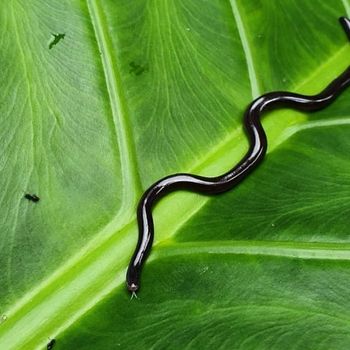 |
| 4 | California Glossy Snake (Arizona elegans occidentalis) |
| 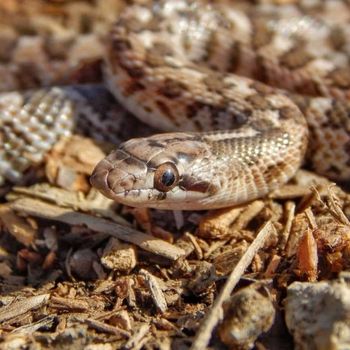 |
| 5 | California Kingsnake (Lampropeltis californiae) |
| 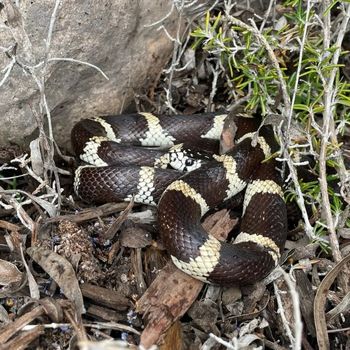 |
| 6 | California Lyresnake (Trimorphodon lyrophanes) |
| 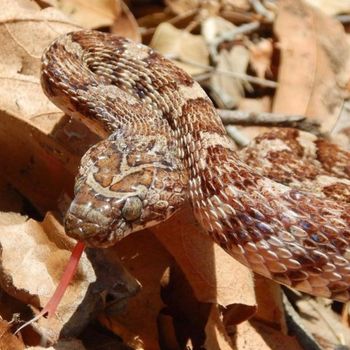 |
| 7 | California Mountain Kingsnake (Lampropeltis zonata) |
|  |
| 8 | California Nightsnake (Hypsiglena torquata) |
| 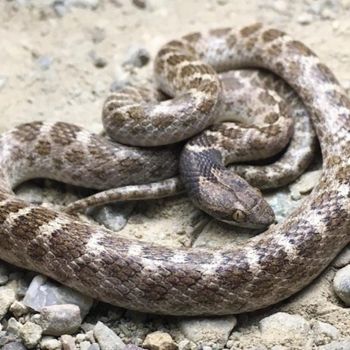 |
| 9 | California Red-sided Garter Snake (Thamnophis sirtalis infernalis) |
|  |
| 10 | California Striped Racer (Masticophis lateralis) |
| 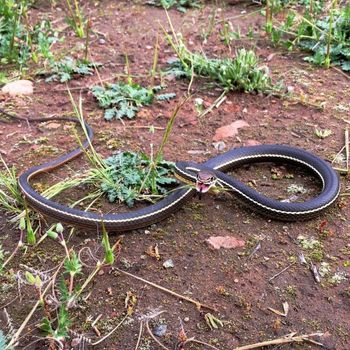 |
| 11 | Coast Garter Snake (Thamnophis elegans terrestris) |
|  |
| 12 | Coast Mountain Kingsnake (Lampropeltis multifasciata) |
| 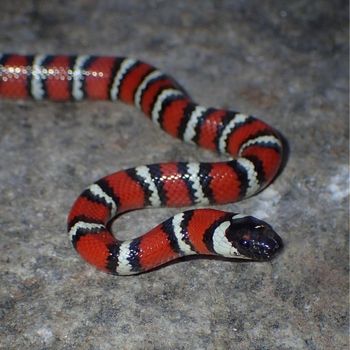 |
| 13 | Coast Patch-nosed Snake (Salvadora hexalepis virgultea) |
| 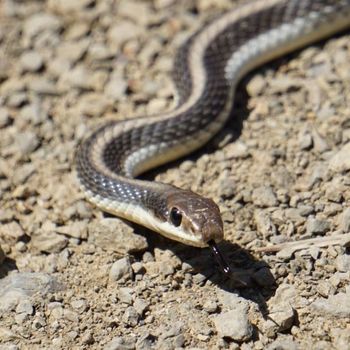 |
| 14 | Colorado Desert Shovel-nosed Snake (Chionactis occipitalis annulata) |
| 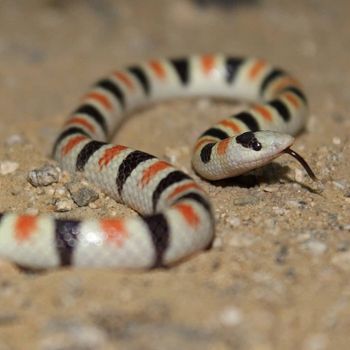 |
| 15 | Colorado Desert Sidewinder (Crotalus cerastes laterorepens) |
|  |
| 16 | Common Sharp-tailed Snake (Contia tenuis) |
| 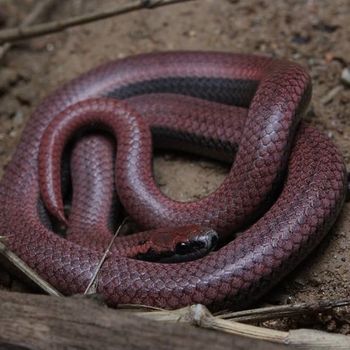 |
| 17 | Common Water Snake (Nerodia sipedon) |
| 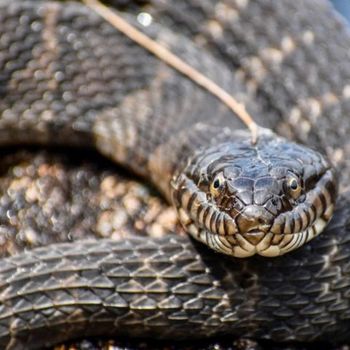 |
| 18 | Coral-bellied Ringneck Snake (Diadophis punctatus celaenops) |
| 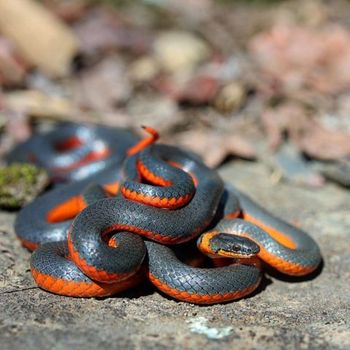 |
| 19 | Desert Glossy Snake (Arizona elegans) |
|  |
| 20 | Desert Patched-nosed Snake (Salvadora hexalepis deserticola) |
| 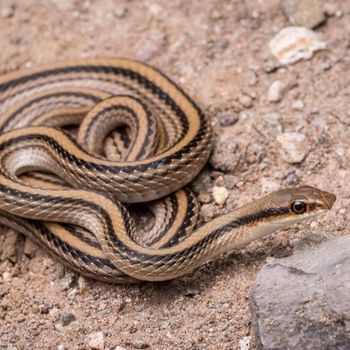 |
| 21 | Desert Striped Whipsnake (Masticophis taeniatus) |
|  |
| 22 | Desert Threadsnake (Leptotyphlops humilis) |
| 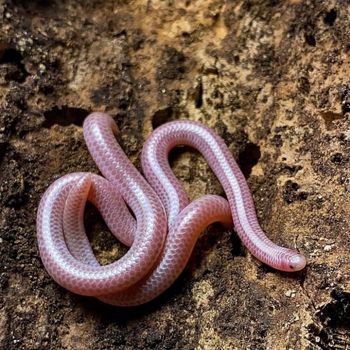 |
| 23 | Diablo Range Gartersnake (Thamnophis atratus zaxanthus) |
| 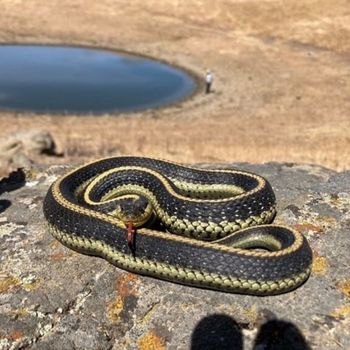 |
| 24 | Florida Water Snake (Nerodia fasciata pictiventris) |
|  |
| 25 | Forest Sharp-tailed Snake (Contia longicaudae) |
| 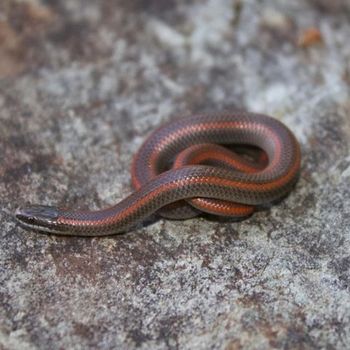 |
| 26 | Giant Garter Snake (Thamnophis gigas) |
| 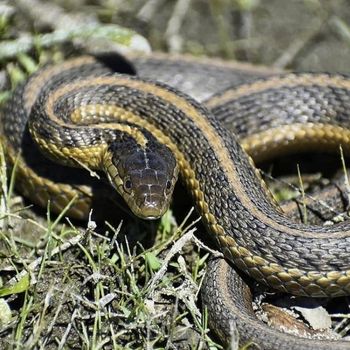 |
| 27 | Great Basin Gophersnake (Pituophis catenifer deserticola) |
| 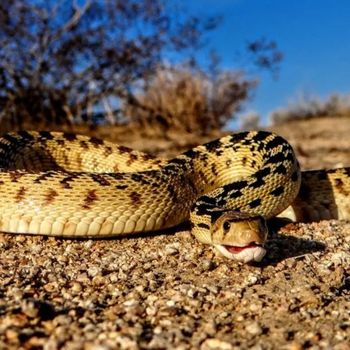 |
| 28 | Great Basin Rattlesnake (Crotalus oreganus lutosus) |
| 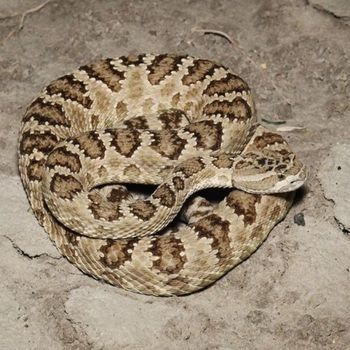 |
| 29 | Long-Nosed Snake (Rhinocheilus lecontei) |
| 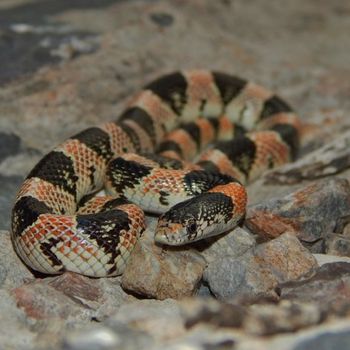 |
| 30 | Marcy’s Checkered Garter Snake (Thamnophis marcianus marcianus) |
| 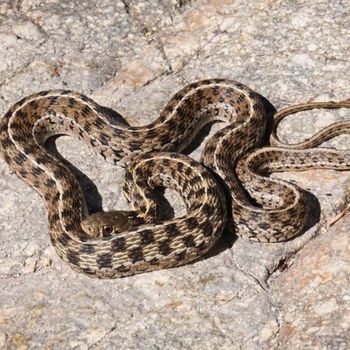 |
| 31 | Mohave Desert Sidewinder (Crotalus cerastes) |
| 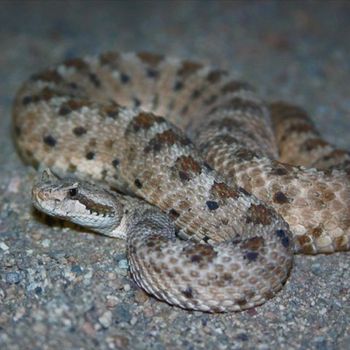 |
| 32 | Mohave Glossy Snake (Arizona elegans candida) |
|  |
| 33 | Mohave Patch-nosed Snake (Salvadora hexalepis mojavensis) |
| 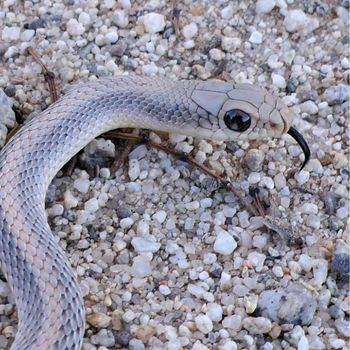 |
| 34 | Mohave Shovel-nosed Snake (Chionactis occipitalis) |
| 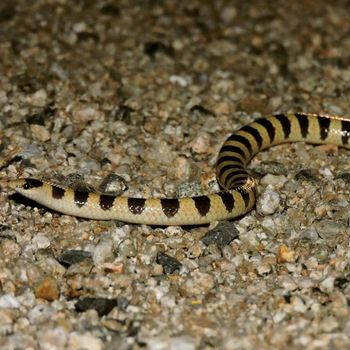 |
| 35 | Monterey Ringneck Snake (Diadophis punctatus vandenburghii) |
| 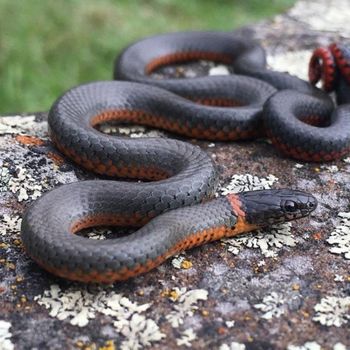 |
| 36 | Mountain Gartersnake (Thamnophis elegans elegans) |
|  |
| 37 | Northern Desert Night Snake (Hypsiglena chlorophaea deserticola) |
| 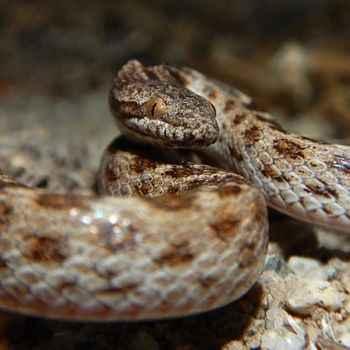 |
| 38 | Northern Mohave Rattlesnake (Crotalus scutulatus scutulatus) |
| 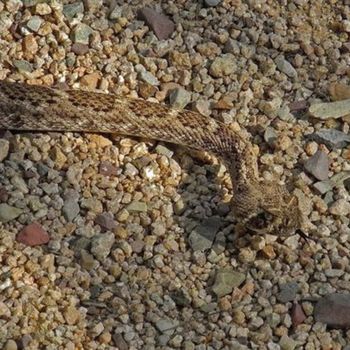 |
| 39 | Northern Pacific Rattlesnake (Crotalus oreganus) |
| 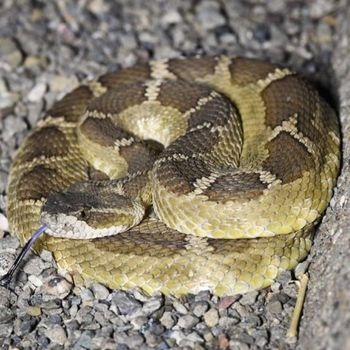 |
| 40 | Northern Rubber Boa (Charina bottae) |
| 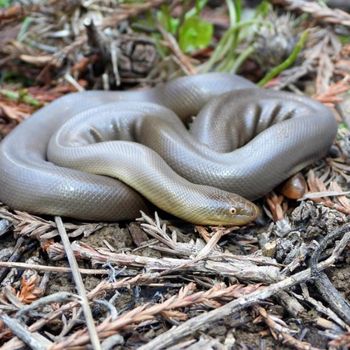 |
| 41 | Northwestern Garter Snake (Thamnophis ordinoides) |
| 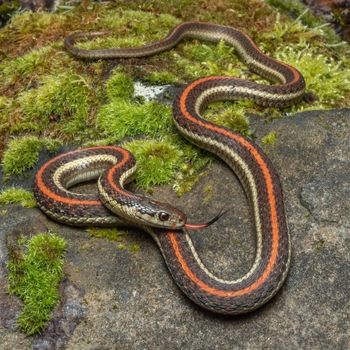 |
| 42 | Northwestern Ringneck Snake (Diadophis punctatus occidentalis) |
|  |
| 43 | Oregon Gartersnake (Thamnophis atratus hydrophilus) |
|  |
| 44 | Pacific Gophersnake (Pituophis catenifer) |
| 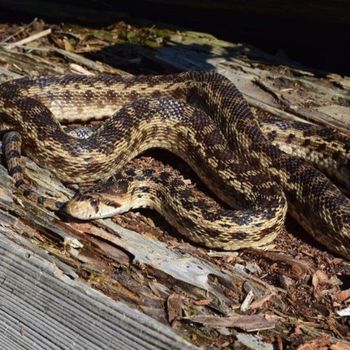 |
| 45 | Pacific Ringneck Snake (Diadophis punctatus amabilis) |
| 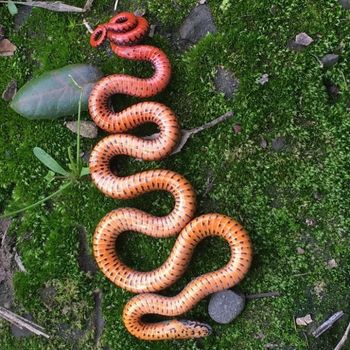 |
| 46 | Panamint Rattlesnake (Crotalus stephensi) |
|  |
| 47 | Red Diamond Rattlesnake (Crotalus ruber) |
| 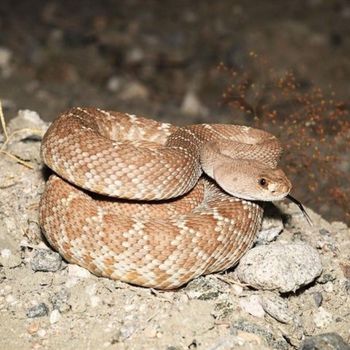 |
| 48 | Red Racer (Coluber constrictor) |
| 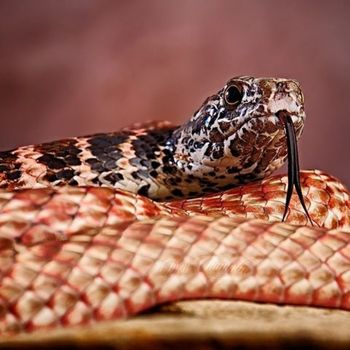 |
| 49 | Regal Ringneck Snake (Diadophis punctatus regalis) |
| 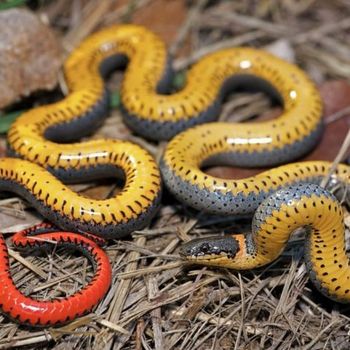 |
| 50 | Rosy Boa (Lichanura trivirgata) |
| 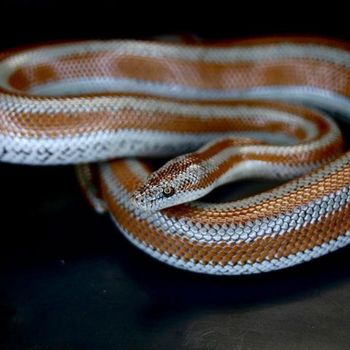 |
| 51 | San Bernardino Ringneck Snake (Diadophis punctatus modestus) |
| 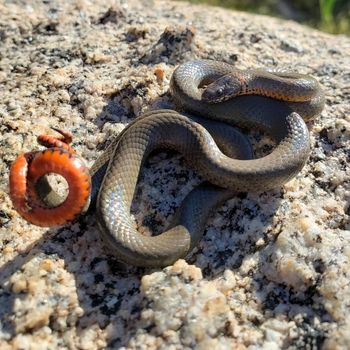 |
| 52 | San Diego Gophersnake (Pituophis catenifer annectens) |
|  |
| 53 | San Diego Nightsnake (Hypsiglena ochrorhyncha klauberi) |
| 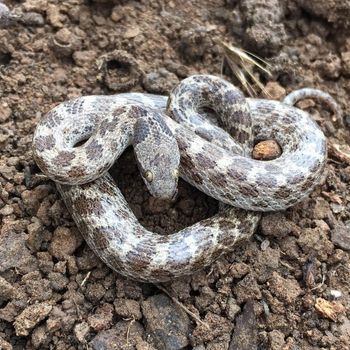 |
| 54 | San Diego Ringneck Snake (Diadophis punctatus similis) |
| 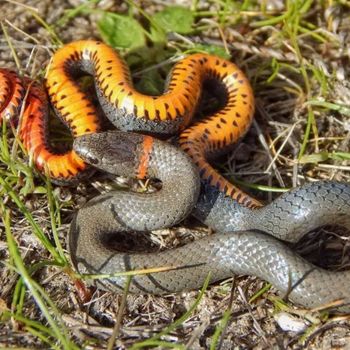 |
| 55 | San Francisco Gartersnake (Thamnophis sirtalis tetrataenia) |
| 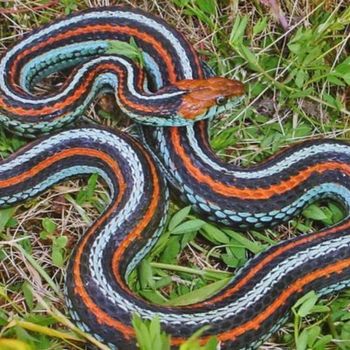 |
| 56 | San Joaquin Coachwhip (Masticophis flagellum ruddocki) |
| 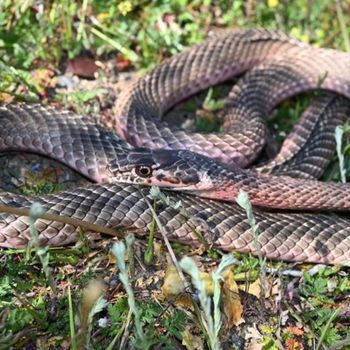 |
| 57 | Santa Cruz Garter Snake (Thamnophis atratus atratus) |
| 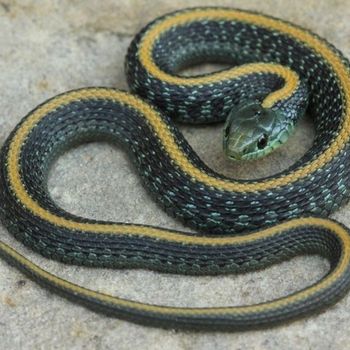 |
| 58 | Santa Cruz Island Gophersnake (Pituophis catenifer pumilis) |
| 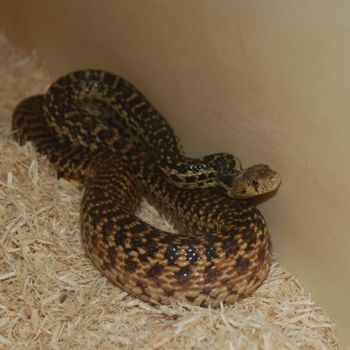 |
| 59 | Sierra Garter Snake (Thamnophis couchii) |
| 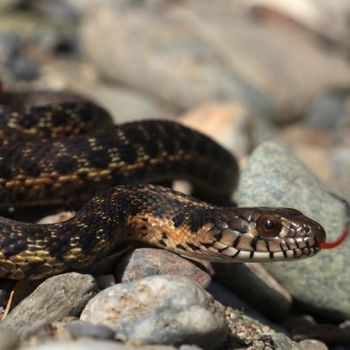 |
| 60 | Smith’s Black-Headed Snake (Tantilla hobartsmithi) |
| 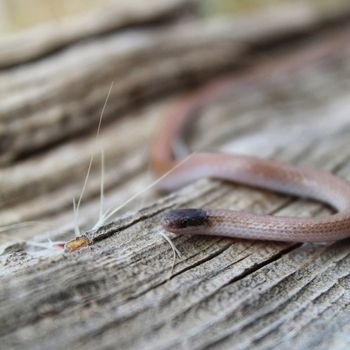 |
| 61 | Sonoran Gophersnake (Pituophis catenifer affinis) |
| 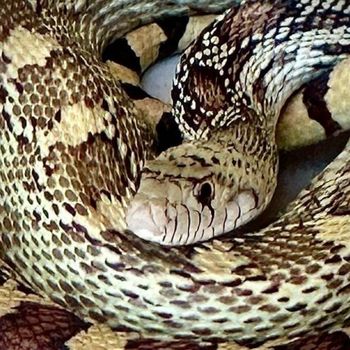 |
| 62 | Sonoran Lyre Snake (Trimorphodon lambda) |
| 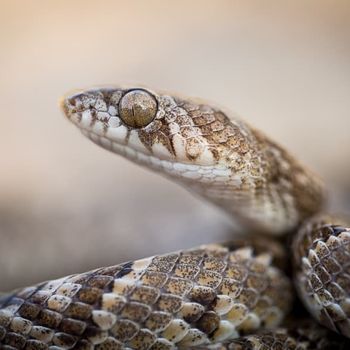 |
| 63 | Southern Pacific Rattlesnake (Crotalus oreganus helleri) |
| 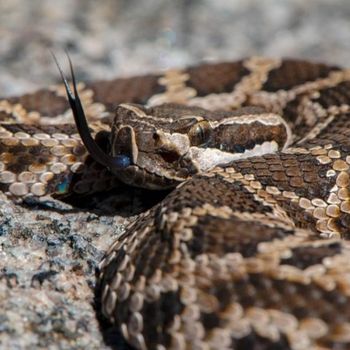 |
| 64 | Southern Rubber Boa (Charina umbratica) |
| 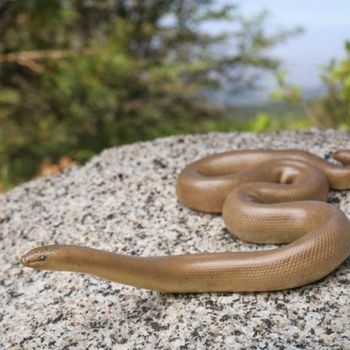 |
| 65 | Southwestern Speckled Rattlesnake (Crotalus pyrrhus) |
| 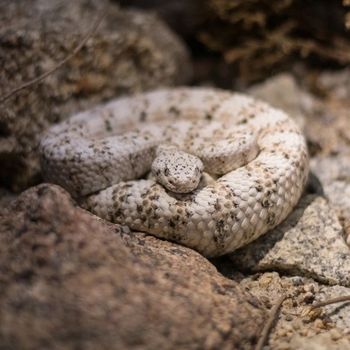 |
| 66 | Southwestern Threadsnake (Leptotyphlops humilis) |
| 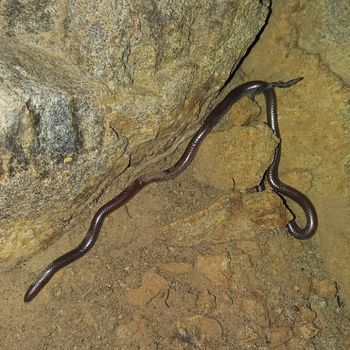 |
| 67 | Spotted Leaf-Nosed Snake (Phyllorhynchus decurtatus) |
| 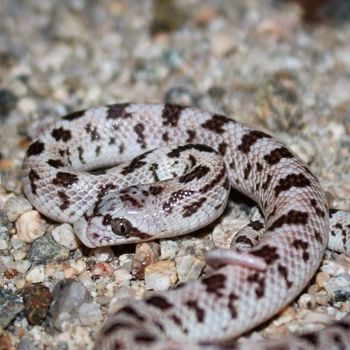 |
| 68 | Two-striped Garter Snake (Thamnophis hammondii) |
| 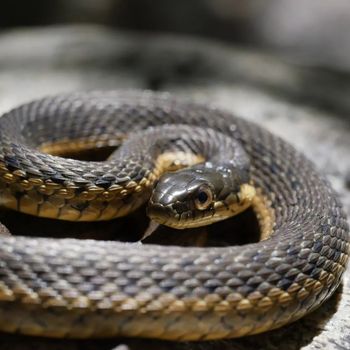 |
| 69 | Valley garter snake (Thamnophis elegans vagrans) |
| 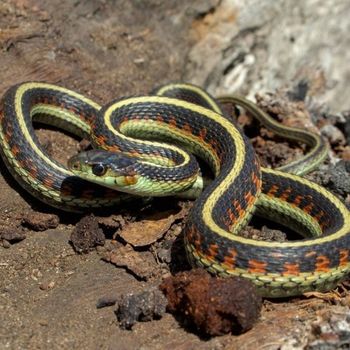 |
| 70 | Variable Ground Snake (Atractus trilineatus) |
| 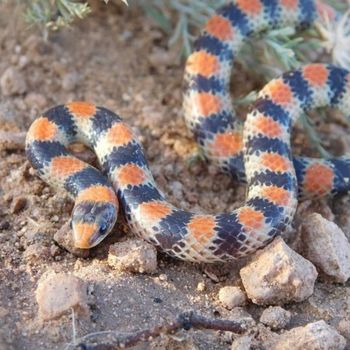 |
| 71 | Wandering Garter Snake (Thamnophis elegans vagrans) |
| 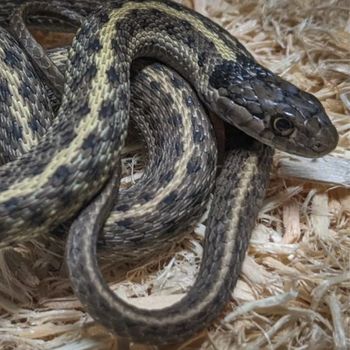 |
| 72 | Western Black-headed Snake (Tantilla planiceps) |
| 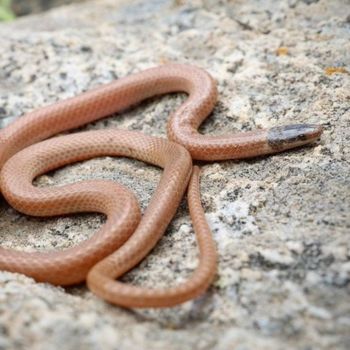 |
| 73 | Western Diamondback Rattlesnake (Crotalus atrox) |
| 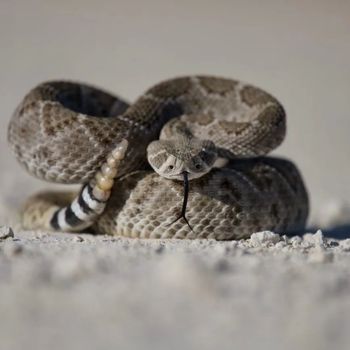 |
| 74 | Western Yellow-bellied Racer (Coluber constrictor mormon) |
| 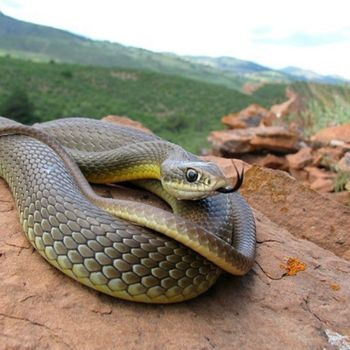 |
| 75 | Yellow-bellied Sea Snake (Hydrophis platurus) |
| 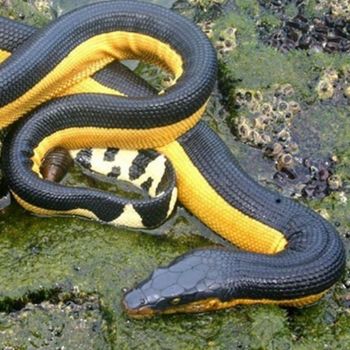 |
75 Snakes You Can Find in California
In the state of California, a fascinating array of serpents can be found slithering through its diverse landscapes. From venomous to harmless, each species has its unique story to tell. Below, we’ll explore the wonders of these often misunderstood creatures of California, from their natural habitats and behaviors to the challenges they face in our changing world.
1. Alameda Striped Racer
- Scientific Name: Coluber lateralis euryxanthus
- Common Name: Alameda striped racer
- Size: Up to 3 feet (90 cm)
- Natural Habitat: Grasslands and coastal shrublands
- Color: Greenish-blue with yellow stripes
- Habitat: Grasslands and coastal shrublands
- Maximum Size: Up to 3 feet (90 cm)
- Diet: Lizards and insects
- Reproduction: Lay eggs in clutches of 2-10
- Venom: Non-venomous
- Conservation: Critically endangered
It’s a beautiful snake with the scientific name Coluber lateralis euryxanthus. These creatures can grow up to 3 feet long and have a stunning greenish-blue color with yellow stripes. They love hanging out in grasslands and coastal shrublands, and they’re super active during the day. Their diet mainly consists of lizards and insects. They lay eggs in clutches of 2-10, and don’t worry, they’re non-venomous. Sadly, they’re critically endangered.
2. Baja California Coachwhip
- Scientific Name: Masticophis fuliginosus
- Common Name: Baja california coachwhip
- Size: Up to 8 feet (2.4 meters)
- Natural Habitat: Deserts, rocky hillsides, and shrublands
- Color: Dark brown or reddish-brown
- Habitat: Deserts, rocky hillsides, and shrublands
- Maximum Size: Up to 8 feet (2.4 meters)
- Diet: Lizards, small mammals, birds, and eggs
- Reproduction: Lay eggs in clutches of 4-12
- Venom: Non-venomous
- Conservation: Least concern
The Baja California Coachwhip, scientifically known as Masticophis fuliginosus, is a non-venomous snake species that can grow up to 8 feet (2.4 meters) in length. The color of these California residents ranges from dark brown to reddish-brown, allowing it to blend into its natural habitat, which includes deserts, rocky hillsides, and shrublands. As a diurnal and fast-moving creature, it feeds on lizards, small mammals, birds, and eggs. The species reproduces by laying clutches of 4-12 eggs and is listed as a species of least concern in terms of conservation status.
3. Brahminy Blind Snake
- Scientific Name: Indotyphlops braminus
- Common Name: Brahminy blind snake
- Size: 2-4 inches (5-10 cm)
- Natural Habitat: Grasslands, gardens, and urban areas
- Color: Uniform brown, grey, or purple
- Habitat: Grasslands, gardens, and urban areas
- Maximum Size: 2-4 inches (5-10 cm)
- Diet: Termites and ant larvae
- Reproduction: Parthenogenetic reproduction, producing 2-8 clones
- Venom: Non-venomous
- Conservation: Least concern
The Brahminy Blind Snake (Indotyphlops braminus) is a small, non-venomous snake measuring 2-4 inches long. It displays uniform brown, grey, or purple coloration and lives in grasslands, gardens, and urban areas. Exhibiting fossorial and nocturnal behavior, they primarily feed on termites and ant larvae. Uniquely, this species reproduces through parthenogenesis, resulting in 2-8 genetically identical offspring. Despite their conservation status being of least concern, they remain elusive and rarely seen by humans.
4. California Glossy Snake
- Scientific Name: Arizona elegans occidentalis
- Common Name: California glossy snake
- Size: Up to 5 feet (1.5 meters)
- Natural Habitat: Deserts, grasslands, and scrublands
- Color: Tan or light brown with dark blotches
- Habitat: Deserts, grasslands, and scrublands
- Maximum Size: Up to 5 feet (1.5 meters)
- Diet: Small mammals, lizards, and amphibians
- Reproduction: Lay eggs in clutches of 3-12
- Venom: Non-venomous
- Conservation: Least concern
The California Glossy Snake (Arizona elegans occidentalis) is a non-venomous reptile growing up to 5 feet (1.5 meters) in length. Sporting a tan or light brown color with dark blotches, this nocturnal and secretive creature of California inhabits deserts, grasslands, and scrublands. Their diet consists of small mammals, lizards, and amphibians. Females lay eggs in clutches of 3-12, contributing to their “least concern” conservation status.
5. California Kingsnake
- Scientific Name: Lampropeltis californiae
- Common Name: California kingsnake
- Size: Up to 4 feet (1.2 meters)
- Natural Habitat: Various habitats, including forests, grasslands, and deserts
- Color: Black or brown with white or yellow bands
- Habitat: Various habitats, including forests, grasslands, and deserts
- Maximum Size: Up to 4 feet (1.2 meters)
- Diet: Rodents, birds, reptiles, and amphibians
- Reproduction: Lay eggs in clutches of 3-24
- Venom: Non-venomous
- Conservation: Least concern
The California Kingsnake (Lampropeltis californiae) is a non-venomous snake found throughout California’s diverse habitats, such as forests, grasslands, and deserts. They can grow up to 4 feet (1.2 meters) in length and are usually black or brown with white or yellow bands. Being nocturnal and terrestrial, they mainly feed on rodents, birds, reptiles, and amphibians. These snakes reproduce by laying egg clutches ranging from 3 to 24 eggs. Fortunately, their conservation status is classified as “Least Concern.”
6. California Lyresnake
- Scientific Name: Trimorphodon lyrophanes
- Common Name: California lyresnake
- Size: Up to 4 feet (1.2 meters)
- Natural Habitat: Rocky hillsides, canyons, and desert scrublands
- Color: Grayish-brown with dark crossbands
- Habitat: Rocky hillsides, canyons, and desert scrublands
- Maximum Size: Up to 4 feet (1.2 meters)
- Diet: Lizards, small mammals, and birds
- Reproduction: Live-bearing, gives birth to 2-6 young
- Venom: Venomous, but not dangerous to humans
- Conservation: Least concern
California Lyresnake, scientifically known as Trimorphodon lyrophanes, is characterized by its grayish-brown color with dark crossbands. This venomous, but non-dangerous to humans, snake can grow up to 4 feet (1.2 meters) and thrive in rocky hillsides, canyons, and desert scrublands. As nocturnal and agile climbers, their diet consists of lizards, small mammals, and birds. The species that call California its home reproduces through live-bearing, giving birth to 2-6 offspring. Currently, the conservation status of California Lyresnake is of least concern.
7. California Mountain Kingsnake
- Scientific Name: Lampropeltis zonata
- Common Name: California mountain kingsnake
- Size: Up to 2-3 feet (61-91 centimeters)
- Natural Habitat: Mountain regions, including coniferous forests, oak woodlands, and rocky outcrops
- Color: Alternating red, black, and white bands
- Habitat: Mountain regions, including coniferous forests, oak woodlands, and rocky outcrops
- Maximum Size: Up to 2-3 feet (61-91 centimeters)
- Diet: Carnivorous; eats other reptiles, amphibians, and small mammals
- Reproduction: Lays eggs in clutches of 2-10
- Venom: Non-venomous
- Conservation: Least concern
The California Mountain Kingsnake (Lampropeltis zonata) is a slender, non-venomous reptile measuring up to 2-3 feet (61-91 cm) in length. It is characterized by its striking red, black, and white alternating bands. Naturally found in mountain regions of California, this species inhabits coniferous forests, oak woodlands, and rocky outcrops. As a diurnal and secretive creature, it mainly feeds on other reptiles, amphibians, and small mammals. Mating season sees females laying eggs in clutches of 2-10. Currently, the species is listed under “least concern” in conservation status.
8. California Nightsnake
- Scientific Name: Hypsiglena torquata
- Common Name: California nightsnake
- Size: Up to 2 feet (61 centimeters)
- Natural Habitat: Various habitats, including woodlands, grasslands, and deserts
- Color: Yellowish or brownish with dark blotches
- Habitat: Various habitats, including woodlands, grasslands, and deserts
- Maximum Size: Up to 2 feet (61 centimeters)
- Diet: Reptiles, amphibians, and small mammals
- Reproduction: Lay eggs in clutches of 2-9
- Venom: Mildly venomous (not harmful to humans)
- Conservation: Least concern
The California Nightsnake (Hypsiglena torquata) is a nocturnal and secretive reptile native to various habitats, including woodlands, grasslands, and deserts. Measuring up to 2 feet (61 centimeters) in length, these snakes exhibit a yellowish or brownish color with dark blotches. Their diet primarily consists of reptiles, amphibians, and small mammals. During reproduction, they lay eggs in clutches of 2-9. Although they are mildly venomous, their venom is not harmful to humans. The California Nightsnake’s conservation status is currently classified as least concern.
9. California Red-sided Garter Snake
- Scientific Name: Thamnophis sirtalis infernalis
- Common Name: California red-sided garter snake
- Size: Up to 3.5 feet (1 meter)
- Natural Habitat: Woodlands, grasslands, marshes, and coastal dunes
- Color: Red or orange with blue or black stripes
- Habitat: Woodlands, grasslands, marshes, and coastal dunes
- Maximum Size: Up to 3.5 feet (1 meter)
- Diet: Frogs, tadpoles, fish, earthworms, slugs, and small mammals
- Reproduction: Give live birth to 6-20 babies at a time
- Venom: Mild venom that is harmless to humans, delivered through grooved rear fangs
- Conservation: Least concern
The California Red-sided Garter Snake (Thamnophis sirtalis infernalis) is a vibrant serpent species that grows up to 3.5 feet (1 meter) in length. These creatures sport eye-catching red or orange coloring punctuated by blue or black stripes. They thrive in diverse habitats such as woodlands, grasslands, marshes, and coastal dunes. These diurnal snakes are highly adaptable, feasting on a varied diet of frogs, tadpoles, fish, earthworms, slugs, and small mammals. These snakes give live birth to 6-20 babies at a time and possess mild venom that is harmless to humans. Currently, their conservation status is listed as “Least Concern.”
10. California Striped Racer
- Scientific Name: Masticophis lateralis
- Common Name: California striped racer
- Size: Up to 4.5 feet (1.4 meters)
- Natural Habitat: Various habitats, including grasslands, chaparral, and woodlands
- Color: Black or dark brown with light yellow or white stripes
- Habitat: Various habitats, including grasslands, chaparral, and woodlands
- Maximum Size: Up to 4.5 feet (1.4 meters)
- Diet: Lizards, small mammals, and birds
- Reproduction: Lay eggs in clutches of 3-9
- Venom: Non-venomous
- Conservation: Least concern
The California Striped Racer (Masticophis lateralis) is a non-venomous snake that can grow up to 4.5 feet (1.4 meters) in length. It features a black or dark brown coloring with light yellow or white stripes running down its back. This fast-moving, diurnal species inhabits various ecosystems, including grasslands, chaparral, and woodlands. Its diet consists primarily of lizards, small mammals, and birds. Reproducing via egg-laying, the California Striped Racer produces clutches of 3-9 eggs. Currently, its conservation status is listed as “least concern.”
11. Coast Garter Snake
- Scientific Name: Thamnophis elegans terrestris
- Common Name: Coast garter snake
- Size: 20-43 inches (51-109 cm)
- Natural Habitat: Forest edges, grasslands, marshes, and ponds
- Color: Black or brown with yellow, orange, or red stripes
- Habitat: Forest edges, grasslands, marshes, and ponds
- Maximum Size: 20-43 inches (51-109 cm)
- Diet: Earthworms, fish, amphibians, and small mammals
- Reproduction: Lay eggs in clutches of 4-26
- Venom: Mild neurotoxic venom but not dangerous to humans
- Conservation: Least concern
The Coast Garter Snake (Thamnophis elegans terrestris) is a medium-sized reptile measuring 20-43 inches in length. Sporting black or brown coloring with vibrant yellow, orange, or red stripes, these snakes are found along forest edges, grasslands, marshes, and ponds. They display diurnal and terrestrial behavior, feeding on earthworms, fish, amphibians, and small mammals. Though they possess mild neurotoxic venom, they pose no threat to humans. Coast Garter Snakes reproduce by laying clutches of 4-26 eggs and are currently marked as a species of least concern in conservation status.
12. Coast Mountain Kingsnake
- Scientific Name: Lampropeltis multifasciata
- Common Name: Coast mountain kingsnake
- Size: Up to 40 inches (102 cm)
- Natural Habitat: Mountain areas, grasslands, and woodlands
- Color: Alternating bands of light and dark colors
- Habitat: Mountain areas, grasslands, and woodlands
- Maximum Size: Up to 40 inches (102 cm)
- Diet: Small mammals, birds, lizards, and other snakes
- Reproduction: Lay eggs in clutches of 3-10
- Venom: Non-venomous
- Conservation: Least concern
The Coast Mountain Kingsnake (Lampropeltis multifasciata) is a striking reptile that can grow up to 40 inches in length. Characterized by alternating bands of light and dark colors, these snakes thrive in mountainous regions, grasslands, and woodlands. They are nocturnal and terrestrial creatures, their diet mainly consisting of small mammals, birds, lizards, and other snakes. Reproduction involves laying egg clutches of 3-10. Despite being non-venomous, they are considered of least concern in terms of conservation.
13. Coast Patch-nosed Snake
- Scientific Name: Salvadora hexalepis virgultea
- Common Name: Coast patch-nosed snake
- Size: 20-50 inches (50-130 cm)
- Natural Habitat: Coastal areas, deserts, grasslands, and woodlands
- Color: Brown or gray with dark-edged spots, light-colored stripe on each side
- Habitat: Coastal areas, deserts, grasslands, and woodlands
- Maximum Size: 20-50 inches (50-130 cm)
- Diet: Lizards, small rodents, and bird eggs
- Reproduction: Lay eggs in clutches of 5-12
- Venom: Non-venomous
- Conservation: Least concern
The Coast Patch-nosed Snake (Salvadora hexalepis virgultea) is a non-venomous reptile that primarily inhabits coastal areas, deserts, grasslands, and woodlands. Measuring between 20 and 50 inches (50-130 cm) in length, this snake is characterized by its brown or gray skin with dark-edged spots and a light-colored stripe on each side. Being diurnal and terrestrial, it preys on lizards, small rodents, and bird eggs. The species lays eggs in clutches of 5-12 and has a conservation status of least concern.
14. Colorado Desert Shovel-nosed Snake
- Scientific Name: Chionactis occipitalis annulata
- Common Name: Colorado desert shovel-nosed snake
- Size: Up to 20 inches (50 centimeters)
- Natural Habitat: Deserts, including sandy, rocky, and gravelly areas
- Color: Red and black with alternating light-colored bands
- Habitat: Deserts, including sandy, rocky, and gravelly areas
- Maximum Size: Up to 20 inches (50 centimeters)
- Diet: Insects, primarily beetle larvae
- Reproduction: Lays eggs in clutches of 2-4
- Venom: Mildly venomous, but not harmful to humans
- Conservation: Least concern
The Colorado Desert Shovel-nosed Snake (Chionactis occipitalis annulata) is a species of nocturnal serpent, growing up to 20 inches (50 centimeters) in length. Displaying a vibrant red and black pattern with alternating light-colored bands, it inhabits deserts, including sandy, rocky, and gravelly areas. Its specialized burrowing behavior helps it navigate through sand and soil while hunting insects, primarily beetle larvae. The snake reproduces by laying clutches of 2-4 eggs. Although mildly venomous, it poses no threat to humans and currently has a conservation status of ‘Least Concern.’
15. Colorado Desert Sidewinder
- Scientific Name: Crotalus cerastes laterorepens
- Common Name: Colorado desert sidewinder
- Size: Up to 2.5 feet (76 cm)
- Natural Habitat: Deserts, sand dunes, and rocky hillsides
- Color: Light gray or sandy brown with dark bands
- Habitat: Deserts, sand dunes, and rocky hillsides
- Maximum Size: Up to 2.5 feet (76 cm)
- Diet: Small rodents, lizards, and other snakes
- Reproduction: Lay eggs in clutches of 5-18
- Venom: Venomous and potentially dangerous, but not typically life-threatening
- Conservation: Least concern
The Colorado Desert Sidewinder (Crotalus cerastes laterorepens) is a species of venomous snake characterized by its light gray or sandy brown color with dark bands. Growing up to 2.5 feet (76 cm) long, it inhabits deserts, sand dunes, and rocky hillsides. This primarily nocturnal snake uses a distinct sidewinding motion for movement and preys on small rodents, lizards, and other snakes. Females lay eggs in clutches of 5-18. Though venomous and potentially dangerous, their bites are not typically life-threatening. The species’ conservation status is listed as least concern.
16. Common Sharp-tailed Snake
- Scientific Name: Contia tenuis
- Common Name: Common sharp-tailed snake
- Size: Up to 20 inches (50 centimeters)
- Natural Habitat: Moist woodlands, grasslands, and under rocky areas
- Color: Brown or reddish-brown with light rings on the tail
- Habitat: Moist woodlands, grasslands, and under rocky areas
- Maximum Size: Up to 20 inches (50 centimeters)
- Diet: Slugs, snails, and insect larvae
- Reproduction: Lay eggs in clutches of 2-7
- Venom: Mildly venomous, not harmful to humans
- Conservation: Least concern
The Common Sharp-tailed Snake (Contia tenuis) is a small, nocturnal reptile measuring up to 20 inches (50 centimeters) in length with a brown or reddish-brown coloration, distinct light rings on its tail, and a mildly venomous, but harmless bite. This shy and secretive snake thrives in moist woodlands, grasslands, and rocky areas, feasting on slugs, snails, and insect larvae. Typically laying 2-7 eggs per clutch, these snakes have a conservation status of “Least Concern.”
17. Common Water Snake
- Scientific Name: Nerodia sipedon
- Common Name: Common water snake
- Size: Up to 4.5 feet (1.4 meters)
- Natural Habitat: Aquatic habitats, including lakes, rivers, and ponds
- Color: Brown or gray with dark bands or blotches
- Habitat: Aquatic habitats, including lakes, rivers, and ponds
- Maximum Size: Up to 4.5 feet (1.4 meters)
- Diet: Fish, frogs, and salamanders
- Reproduction: Give birth to live young in litters of 10-40
- Venom: Non-venomous, but can release a foul-smelling musk
- Conservation: Least concern
The Common Water Snake (Nerodia sipedon) is a non-venomous, nocturnal, semiaquatic reptile that can grow up to 4.5 feet (1.4 meters) in size. Their brown or gray body has dark bands or blotches as markings. Commonly found in aquatic habitats like lakes, rivers, and ponds, this snake’s diet consists of fish, frogs, and salamanders. It reproduces by giving birth to live young in litters containing 10-40 offspring. Although non-venomous, it can release foul-smelling musk in defense. Its conservation status is of least concern.
18. Coral-bellied Ringneck Snake
- Scientific Name: Diadophis punctatus celaenops
- Common Name: Coral-bellied ringneck snake
- Size: Up to 10-15 inches (25-38 cm)
- Natural Habitat: Forests, grasslands, and rocky areas
- Color: Dark gray or black with coral-red belly and yellow or orange neck ring
- Habitat: Forests, grasslands, and rocky areas
- Maximum Size: Up to 10-15 inches (25-38 cm)
- Diet: Slugs, insects, and small amphibians
- Reproduction: Lay eggs in clutches of 2-8
- Venom: Mildly venomous, but harmless to humans
- Conservation: Not evaluated
The Coral-bellied Ringneck Snake (Diadophis punctatus celaenops) is a small, nocturnal serpent measuring 10-15 inches (25-38 cm) in length. It sports a dark gray or black hue with a striking coral-red belly and a contrasting yellow or orange neck ring. Inhabiting forests, grasslands, and rocky areas, this secretive snake is rarely seen by humans. Its diet consists of slugs, insects, and small amphibians. The mildly venomous snake lays clutches of 2-8 eggs, but poses no threat to humans. Currently, its conservation status is unassessed.
19. Desert Glossy Snake
- Scientific Name: Arizona elegans
- Common Name: Desert glossy snake
- Size: Up to 5 feet (1.5 meters)
- Natural Habitat: Desert, grassland, and shrubland habitats
- Color: Grayish-brown or pale brown with dark blotches
- Habitat: Desert, grassland, and shrubland habitats
- Maximum Size: Up to 5 feet (1.5 meters)
- Diet: Rodents, lizards, and small birds
- Reproduction: Lay eggs in clutches of 3-15
- Venom: Non-venomous
- Conservation: Least concern
The Desert Glossy Snake (Arizona elegans) is a non-venomous reptile that can grow up to 5 feet (1.5 meters) in length. Sporting a grayish-brown or pale brown hue with dark blotches, it inhabits desert, grassland, and shrubland terrains. As a nocturnal burrower, this snake primarily feeds on rodents, lizards, and small birds. Reproduction involves laying eggs in clutches ranging from 3-15. With a conservation status of “least concern,” the Desert Glossy Snake remains a common sight in its habitat.
20. Desert Patched-nosed Snake
- Scientific Name: Salvadora hexalepis deserticola
- Common Name: Desert patch-nosed snake
- Size: Up to 3.3 feet (1 meter)
- Natural Habitat: Desert, scrub, and grassland areas
- Color: Tan or brown with orange, black, and white patches
- Habitat: Desert, scrub, and grassland areas
- Maximum Size: Up to 3.3 feet (1 meter)
- Diet: Lizards, rodents, and eggs
- Reproduction: Lay eggs in clutches of 4-8
- Venom: Non-venomous
- Conservation: Least concern
Desert Patched-nosed Snake (Salvadora hexalepis deserticola) is a non-venomous reptile that reaches up to 3.3 feet in length. Its tan or brown scales feature vibrant orange, black, and white patches. Primarily found in desert, scrub, and grassland habitats, these diurnal and terrestrial snakes have a diet consisting of lizards, rodents, and eggs. They reproduce by laying clutches of 4-8 eggs. The Desert Patched-nosed Snake currently has a conservation status of least concern.
21. Desert Striped Whipsnake
- Scientific Name: Masticophis taeniatus
- Common Name: Desert striped whipsnake
- Size: 24-67 inches (60-170 cm)
- Natural Habitat: Deserts, grasslands, and woodlands
- Color: Light gray or brown with dark stripes
- Habitat: Deserts, grasslands, and woodlands
- Maximum Size: 24-67 inches (60-170 cm)
- Diet: Lizards, small mammals, and birds
- Reproduction: Lay eggs in clutches of 3-12
- Venom: Non-venomous
- Conservation: Least concern
The Desert Striped Whipsnake (Masticophis taeniatus) is a slender, non-venomous snake measuring 24-67 inches in length, with a light gray or brown color and distinct dark stripes. It inhabits deserts, grasslands, and woodlands of California and is notable for its diurnal and semi-arboreal behavior. The whipsnake primarily feeds on lizards, small mammals, and birds. In terms of reproduction, females lay eggs in clutches of 3-12. Currently, the species holds a conservation status of Least Concern.
22. Desert Threadsnake
- Scientific Name: Leptotyphlops humilis
- Common Name: Desert threadsnake
- Size: Up to 10-16 inches (25-40 cm)
- Natural Habitat: Deserts, grasslands, and sandy areas
- Color: Pinkish-brown to light brown
- Habitat: Deserts, grasslands, and sandy areas
- Maximum Size: Up to 10-16 inches (25-40 cm)
- Diet: Ants, termites, and small insects
- Reproduction: Lay eggs in small clutches of 1-4
- Venom: Non-venomous
- Conservation: Least concern
The Desert Threadsnake (Leptotyphlops humilis) is a small, non-venomous snake measuring 10-16 inches (25-40 cm) in length. It has a distinctive pinkish-brown to light brown color and primarily resides in desert habitats, grasslands, and sandy areas. This nocturnal and burrowing snake feeds on ants, termites, and small insects. Desert Threadsnakes reproduce by laying small clutches of 1-4 eggs. Their conservation status is listed as “least concern,” indicating a healthy and stable population.
23. Diablo Range Gartersnake
- Scientific Name: Thamnophis atratus zaxanthus
- Common Name: Diablo range gartersnake
- Size: Up to 3 feet (91 cm)
- Natural Habitat: Streams, creeks, and spring-fed habitats
- Color: Dark grey or black with yellow or orange dorsal stripe
- Habitat: Streams, creeks, and spring-fed habitats
- Maximum Size: Up to 3 feet (91 cm)
- Diet: Fish, amphibians, and invertebrates
- Reproduction: Lay 5-40 live young during late summer
- Venom: Non-venomous
- Conservation: Data deficient
The Diablo Range Gartersnake (Thamnophis atratus zaxanthus) is a species of snake that can grow up to 3 feet (91 cm) long. Its dark grey or black body features a vibrant yellow or orange dorsal stripe. Inhabiting streams, creeks, and spring-fed habitats, it is diurnal and an excellent swimmer. This non-venomous snake preys on fish, amphibians, and invertebrates. Reproduction occurs in late summer, with females giving birth to 5-40 live young. Its conservation status is currently data deficient.
24. Florida Water Snake
- Scientific Name: Nerodia fasciata pictiventris
- Common Name: Florida water snake
- Size: 2-4 feet (0.6-1.2 meters)
- Natural Habitat: Freshwater habitats like lakes, ponds, and marshes
- Color: Dark brown or black with lighter bands
- Habitat: Freshwater habitats like lakes, ponds, and marshes
- Maximum Size: 2-4 feet (0.6-1.2 meters)
- Diet: Fish, frogs, and tadpoles
- Reproduction: Live-bearing, 10-40 offspring per litter
- Venom: Non-venomous
- Conservation: Least concern
The Florida Water Snake (Nerodia fasciata pictiventris) is a non-venomous, aquatic snake that thrives in freshwater habitats such as lakes, marshes, and ponds. It is easily identified by its dark brown or black coloring and contrasting lighter bands. This species typically measures between 2-4 feet (0.6-1.2 meters) in length and feeds primarily on fish, frogs, and tadpoles. Known for its nocturnal behavior, the Florida Water Snake reproduces through live-bearing, producing 10-40 offspring per litter. This species has a conservation status of least concern. The Florida Water Snake is often mistaken for the closely related and similarly colored Texas Water Snake. However, one key difference is that the Florida Water Snake has a distinct light-colored belly, while the Texas Water Snake’s belly is typically marked with reddish or brownish spots. Additionally, the Florida Water Snake has been known to prey on native Texas frog species, further distinguishing it from its Texas counterpart. Despite occasional confusion with its neighbor species, the Florida Water Snake plays an important role in its ecosystem as a predator of aquatic species.
25. Forest Sharp-tailed Snake
- Scientific Name: Contia longicaudae
- Common Name: Forest sharp-tailed snake
- Size: Up to 2 feet (60 centimeters)
- Natural Habitat: Mountainous forests and grasslands
- Color: Brown or reddish-brown with light stripe on sides
- Habitat: Mountainous forests and grasslands
- Maximum Size: Up to 2 feet (60 centimeters)
- Diet: Slugs, snails, and insects
- Reproduction: Lays eggs in clutches of 2-5
- Venom: Mildly venomous, harmless to humans
- Conservation: Not evaluated for conservation status
The Forest Sharp-tailed Snake (Contia longicaudae) is a nocturnal, burrowing serpent that reaches up to 2 feet (60 cm) in length. Featuring a brown or reddish-brown hue with light stripes on its sides, this elusive reptile can be found in mountainous forests and grasslands. It feeds primarily on slugs, snails, and insects, and lays eggs in clutches of 2-5. Although mildly venomous, its venom poses no threat to humans. The Forest Sharp-tailed Snake’s conservation status has not been evaluated.
26. Giant Garter Snake
- Scientific Name: Thamnophis gigas
- Common Name: Giant garter snake
- Size: Up to 5 feet (1.5 meters)
- Natural Habitat: Wetlands, marshes, and waterways
- Color: Dark brown or dark green with black-checkered pattern
- Habitat: Wetlands, marshes, and waterways
- Maximum Size: Up to 5 feet (1.5 meters)
- Diet: Fish, frogs, and tadpoles
- Reproduction: Live births, 10-46 young per litter
- Venom: Non-venomous
- Conservation: Threatened
The Giant Garter Snake (Thamnophis gigas) is a large, non-venomous reptile that can reach up to 5 feet (1.5 meters) in length. Its dark brown or dark green coloration features a black-checkered pattern, allowing the snake to blend effortlessly into its wetland, marsh, and waterway habitats. A diurnal and semi-aquatic species, the Giant Garter Snake primarily consumes fish, frogs, and tadpoles. Its unique ability to give live birth results in 10-46 young per litter. Currently, it holds a threatened conservation status.
27. Great Basin Gophersnake
- Scientific Name: Pituophis catenifer deserticola
- Common Name: Great basin gophersnake
- Size: Up to 4.5 feet (1.4 meters)
- Natural Habitat: Semi-arid deserts, grasslands, and rocky areas
- Color: Yellowish or pale brown with dark blotches
- Habitat: Semi-arid deserts, grasslands, and rocky areas
- Maximum Size: Up to 4.5 feet (1.4 meters)
- Diet: Rodents, birds, and eggs
- Reproduction: Lay eggs in clutches of 3-11
- Venom: Non-venomous
- Conservation: Least concern
The Great Basin Gophersnake (Pituophis catenifer deserticola) is a non-venomous reptile that can grow up to 4.5 feet (1.4 meters) in length. It has a yellowish or pale brown color, adorned with dark blotches. This diurnal and burrowing snake primarily inhabits semi-arid deserts, grasslands, and rocky areas. Its diet consists of rodents, birds, and eggs. During reproduction, females lay egg clutches of 3-11 offspring. The species is currently considered of least concern in terms of conservation status.
28. Great Basin Rattlesnake
- Scientific Name: Crotalus oreganus lutosus
- Common Name: Great basin rattlesnake
- Size: Up to 5 feet (1.5 meters)
- Natural Habitat: Desert, rocky areas, and woodlands
- Color: Brown or gray with brown blotches
- Habitat: Desert, rocky areas, and woodlands
- Maximum Size: Up to 5 feet (1.5 meters)
- Diet: Small mammals, birds, and reptiles
- Reproduction: Lay eggs in clutches of 4-21
- Venom: Venomous
- Conservation: Least concern
The Great Basin Rattlesnake (Crotalus oreganus lutosus) is a venomous snake that can grow up to 5 feet (1.5 meters) in length. Its coloration is brown or gray with brown blotches, providing excellent camouflage in its desert, rocky, and woodland habitats. This nocturnal and terrestrial species primarily feeds on small mammals, birds, and reptiles. It reproduces by laying eggs in clutches of 4-21. Despite being venomous, its conservation status is listed as least concern.
29. Long-Nosed Snake
- Scientific Name: Rhinocheilus lecontei
- Common Name: Long-nosed snake
- Size: Up to 30 – 52 inches (76 – 132 cm)
- Natural Habitat: Semi-arid or desert areas, grasslands, scrublands, and rocky terrain
- Color: Black or brown with red, cream, or white bands
- Habitat: Semi-arid or desert areas, grasslands, scrublands, and rocky terrain
- Maximum Size: Up to 30 – 52 inches (76 – 132 cm)
- Diet: Rodents, lizards, and small mammals
- Reproduction: Lay eggs in clutches of 3-10
- Venom: Non-venomous
- Conservation: Least concern
The Long-Nosed Snake (Rhinocheilus lecontei) is a non-venomous reptile that reaches lengths of 30-52 inches (76-132 cm). Its distinct black or brown coloration features red, cream, or white bands. Commonly found in semi-arid or desert areas, grasslands, scrublands, and rocky terrain, this nocturnal creature is terrestrial, non-aggressive, and primarily feeds on rodents, lizards, and small mammals. Long-nosed snakes reproduce by laying clutches of 3-10 eggs, and their conservation status is listed as least concern.
30. Marcy’s Checkered Garter Snake
- Scientific Name: Thamnophis marcianus marcianus
- Common Name: Marcy’s checkered garter snake
- Size: Up to 42 inches (1.07 meters)
- Natural Habitat: Rivers, streams, or damp areas near freshwater
- Color: Brown or green with yellow and black checkered pattern
- Habitat: Rivers, streams, or damp areas near freshwater
- Maximum Size: Up to 42 inches (1.07 meters)
- Diet: Fish, frogs, and invertebrates
- Reproduction: Viviparous with up to 30 live young per litter
- Venom: Non-venomous
- Conservation: Least concern
Marcy’s Checkered Garter Snake (Thamnophis marcianus marcianus) is a non-venomous reptile that can grow up to 42 inches (1.07 meters) long. It features a green or brown body with a yellow and black checkered pattern. These aquatic snakes are commonly found near rivers, streams, or damp areas close to freshwater. These majestic reptile of California are active during both day and night and feed on a diet of fish, frogs, and invertebrates. They reproduce by giving birth to live young, with up to 30 in a litter, and have a conservation status of “Least Concern.”
31. Mohave Desert Sidewinder
- Scientific Name: Crotalus cerastes
- Common Name: Mohave desert sidewinder
- Size: Up to 2.5 feet (0.76 meters)
- Natural Habitat: Deserts, primarily sandy areas
- Color: Light tan or pale gray background with darker bands and blotches
- Habitat: Deserts, primarily sandy areas
- Maximum Size: Up to 2.5 feet (0.76 meters)
- Diet: Small mammals, lizards, and birds
- Reproduction: Females give live birth to 4-18 young
- Venom: Venomous, but not often dangerous to humans
- Conservation: Least concern
The Mohave Desert Sidewinder (Crotalus cerastes) is a venomous rattlesnake species found in deserts, especially sandy areas. Measuring up to 2.5 feet (0.76 meters), their light tan or pale gray coloration with darker bands and blotches provide excellent camouflage. Primarily nocturnal hunters, they bury themselves in the sand and prey on small mammals, lizards, and birds. These snakes give live birth to 4-18 young per litter. Although venomous, their bites are not usually dangerous to humans. They are currently listed as a species of least concern for conservation.
32. Mohave Glossy Snake
- Scientific Name: Arizona elegans candida
- Common Name: Mohave glossy snake
- Size: Up to 5 feet (1.5 meters)
- Natural Habitat: Deserts, grasslands, and pine-oak woodlands
- Color: Gray or tan with dark blotches
- Habitat: Deserts, grasslands, and pine-oak woodlands
- Maximum Size: Up to 5 feet (1.5 meters)
- Diet: Small mammals, birds, and reptiles
- Reproduction: Lay eggs in clutches of 5-15
- Venom: Non-venomous
- Conservation: Least concern
The Mohave Glossy Snake (Arizona elegans candida) is a non-venomous, nocturnal reptile that can grow up to 5 feet (1.5 meters) in length. It has a gray or tan coloration with dark blotches and is found in deserts, grasslands, and pine-oak woodlands. The snake exhibits burrowing behavior and primarily feeds on small mammals, birds, and reptiles. Females reproduce by laying clutches of 5-15 eggs. The conservation status of the Mohave Glossy Snake is currently classified under least concern.
33. Mohave Patch-nosed Snake
- Scientific Name: Salvadora hexalepis mojavensis
- Common Name: Mohave patch-nosed snake
- Size: Up to 46 inches (116 cm)
- Natural Habitat: Desert scrub and chaparral habitats
- Color: Gray or tan with dark markings
- Habitat: Desert scrub and chaparral habitats
- Maximum Size: Up to 46 inches (116 cm)
- Diet: Lizards, small mammals, and reptiles
- Reproduction: Lay eggs in clutches of 2-11
- Venom: Non-venomous
- Conservation: Least concern
The Mohave Patch-nosed Snake (Salvadora hexalepis mojavensis) is a non-venomous reptile that can grow up to 46 inches (116 cm) in length. Featuring a gray or tan color with dark markings, it primarily inhabits desert scrub and chaparral environments. As a diurnal and terrestrial species, it is fast-moving and hunts lizards, small mammals, and other reptiles for sustenance. Reproducing by laying eggs in clutches of 2-11, its conservation status is currently listed as Least Concern.
34. Mohave Shovel-nosed Snake
- Scientific Name: Chionactis occipitalis
- Common Name: Mohave shovel-nosed snake
- Size: Up to 20 inches (50 cm)
- Natural Habitat: Deserts, arid scrublands, sand dunes
- Color: Orange or red with black bands
- Habitat: Deserts, arid scrublands, sand dunes
- Maximum Size: Up to 20 inches (50 cm)
- Diet: Insects, spiders, and small lizards
- Reproduction: Lay eggs in clutches of 2-8
- Venom: Non-venomous
- Conservation: Least concern
The Mohave Shovel-nosed Snake (Chionactis occipitalis) is a non-venomous reptile growing up to 20 inches (50 cm) long. Sporting striking orange or red bands with black borders, this snake thrives in deserts, arid scrublands, and sand dunes. As a nocturnal and fossorial species, they predominantly feed on insects, spiders, and small lizards. During reproduction, females lay clutches of 2-8 eggs. Although its conservation status is currently classified as least concern, habitat loss is an ongoing threat.
35. Monterey Ringneck Snake
- Scientific Name: Diadophis punctatus vandenburghii
- Common Name: Monterey ringneck snake
- Size: 12 to 15 inches
- Natural Habitat: Woodlands, chaparral, and grasslands
- Color: Dark gray or black with yellow or orange ring on neck
- Habitat: Woodlands, chaparral, and grasslands
- Maximum Size: 12 to 15 inches
- Diet: Slugs, worms, amphibians, and lizards
- Reproduction: Lay eggs in clutches of 2-8
- Venom: Mildly venomous but not dangerous to humans
- Conservation: Least concern
The Monterey Ringneck Snake (Diadophis punctatus vandenburghii) is a small, nocturnal, and secretive reptile measuring 12 to 15 inches. It has a dark gray or black body, featuring a distinct yellow or orange neck ring. Found in woodlands, chaparral, and grasslands, it feasts on slugs, worms, amphibians, and lizards. Females lay clutches of 2-8 eggs during reproduction. Though mildly venomous, it poses no danger to humans. Its conservation status is currently listed as “least concern.”
36. Mountain Gartersnake
- Scientific Name: Thamnophis elegans elegans
- Common Name: Mountain gartersnake
- Size: Up to 3 feet (0.91 meters)
- Natural Habitat: Forest edges, meadows, and grasslands near water
- Color: Black or dark brown with yellow or orange stripes
- Habitat: Forest edges, meadows, and grasslands near water
- Maximum Size: Up to 3 feet (0.91 meters)
- Diet: Slugs, insects, fish, and amphibians
- Reproduction: Live birth, 10-30 offspring per litter
- Venom: Mildly venomous, but not dangerous to humans
- Conservation: Least concern
The Mountain Gartersnake (Thamnophis elegans elegans) is a mildly venomous snake, reaching up to 3 feet (0.91 meters) in length. Featuring black or dark brown coloration with yellow or orange stripes, this diurnal species can be found inhabiting forest edges, meadows, and grasslands near water sources. Often basking in the sun or hiding under rocks, its diet includes slugs, insects, fish, and amphibians. Reproducing through live birth, a litter typically yields 10 to 30 offspring. While its venom poses no danger to humans, its conservation status is classified as least concern.
37. Northern Desert Night Snake
- Scientific Name: Hypsiglena chlorophaea deserticola
- Common Name: Northern desert night snake
- Size: Up to 26 inches (66 cm)
- Natural Habitat: Desert, sagebrush, and grassland habitats
- Color: Light brown or gray with dark blotches
- Habitat: Desert, sagebrush, and grassland habitats
- Maximum Size: Up to 26 inches (66 cm)
- Diet: Lizards, small snakes, and amphibians
- Reproduction: Lay eggs in clutches of 3-9
- Venom: Mild venom (harmless to humans)
- Conservation: Least concern
The Northern Desert Night Snake (Hypsiglena chlorophaea deserticola) is a nocturnal and secretive reptile, growing up to 26 inches (66 cm) in length. It has a light brown or gray coloration with dark blotches and can be found in desert, sagebrush, and grassland habitats. The snake primarily feeds on lizards, small snakes, and amphibians. It reproduces by laying clutches of 3-9 eggs and possesses mild venom that is harmless to humans. Its conservation status is classified as least concern.
38. Northern Mohave Rattlesnake
- Scientific Name: Crotalus scutulatus scutulatus
- Common Name: Northern mohave rattlesnake
- Size: Up to 4.5 feet (1.4 meters)
- Natural Habitat: Desert scrub, grasslands, and rocky areas
- Color: Greenish, yellowish, or brownish with dark diamond-shaped blotches
- Habitat: Desert scrub, grasslands, and rocky areas
- Maximum Size: Up to 4.5 feet (1.4 meters)
- Diet: Rodents, birds, and lizards
- Reproduction: Ovoviviparous, giving birth to 4-12 live young
- Venom: Potent neurotoxin and hemotoxin
- Conservation: Least concern
The Northern Mohave Rattlesnake (Crotalus scutulatus scutulatus) is a large, uniquely colored reptile reaching up to 4.5 feet (1.4 meters) in length. It exhibits greenish, yellowish, or brownish hues with dark diamond-shaped blotches. Inhabiting desert scrub, grasslands, and rocky areas, this nocturnal and terrestrial snake primarily preys on rodents, birds, and lizards. It reproduces through ovoviviparity, giving birth to 4-12 live young. Its venom is a potent blend of neurotoxins and hemotoxins, but its conservation status is listed as least concern.
39. Northern Pacific Rattlesnake
- Scientific Name: Crotalus oreganus
- Common Name: Northern pacific rattlesnake
- Size: Up to 5 feet (1.5 meters)
- Natural Habitat: Dry forests, grasslands, scrublands, and rocky areas
- Color: Brown or olive with dark bands
- Habitat: Dry forests, grasslands, scrublands, and rocky areas
- Maximum Size: Up to 5 feet (1.5 meters)
- Diet: Small mammals, birds, and lizards
- Reproduction: Lay eggs in clutches of 4-21
- Venom: Venomous, with hemotoxic venom
- Conservation: Least concern
The Northern Pacific Rattlesnake (Crotalus oreganus) is a species of venomous snake that can grow up to 5 feet (1.5 meters) in length. Sporting a brown or olive body with dark bands, its habitat consists of dry forests, grasslands, scrublands, and rocky areas. This ambush predator hunts small mammals, birds, and lizards at night during summer months, and prefers daytime in cooler seasons. Egg-laying occurs in clutches of 4-21, and its hemotoxic venom is potent. The species’ conservation status is currently of least concern.
40. Northern Rubber Boa
- Scientific Name: Charina bottae
- Common Name: Northern rubber boa
- Size: Up to 33 inches (84 cm)
- Natural Habitat: Forests, grasslands, chaparral, and shrublands
- Color: Uniform brown with lighter ventral surface
- Habitat: Forests, grasslands, chaparral, and shrublands
- Maximum Size: Up to 33 inches (84 cm)
- Diet: Rodents, small mammals, and reptile eggs
- Reproduction: Live birth, producing 1-9 offspring per litter
- Venom: Non-venomous
- Conservation: Least concern
The Northern Rubber Boa (Charina bottae) is a non-venomous snake species that can grow up to 33 inches (84 cm) in length. It is characterized by its uniform brown color and lighter ventral surface. These secretive, nocturnal reptiles dwell in various habitats, including forests, grasslands, chaparral, and shrublands. The docile Northern Rubber Boa primarily feeds on rodents, small mammals, and reptile eggs. They reproduce through live birth, typically delivering 1-9 offspring per litter. Their conservation status is least concern.
41. Northwestern Garter Snake
- Scientific Name: Thamnophis ordinoides
- Common Name: Northwestern garter snake
- Size: Up to 43 inches (1.1 meters)
- Natural Habitat: Grasslands, meadows, woodlands, and coastal areas
- Color: Black, brown, or green with stripes and spots
- Habitat: Grasslands, meadows, woodlands, and coastal areas
- Maximum Size: Up to 43 inches (1.1 meters)
- Diet: Slugs, worms, small amphibians
- Reproduction: Live-bearing, 3-16 babies per litter
- Venom: Mildly venomous but not harmful to humans
- Conservation: Least concern
The Northwestern Garter Snake (Thamnophis ordinoides) is a medium-sized snake species found in grasslands, meadows, woodlands, and coastal areas. Growing up to 43 inches (1.1 meters) in length, it features black, brown, or green colors with distinctive stripes and spots. As a diurnal and terrestrial creature, it actively hunts slugs, worms, and small amphibians during the day. Northwestern Garter Snakes are live-bearing, producing 3-16 babies per litter. Though mildly venomous, their bites pose no harm to humans. Their conservation status is currently listed as “Least Concern.”
42. Northwestern Ringneck Snake
- Scientific Name: Diadophis punctatus occidentalis
- Common Name: Northwestern ringneck snake
- Size: 12-18 inches (30-46 cm)
- Natural Habitat: Wooded areas, grasslands, and rocky habitats
- Color: Olive, gray, or brown with orange or yellow ring around neck
- Habitat: Wooded areas, grasslands, and rocky habitats
- Maximum Size: 12-18 inches (30-46 cm)
- Diet: Slugs, insects, salamanders, and small snakes
- Reproduction: Lay eggs in clutches of 3-10
- Venom: Mild venom, harmless to humans
- Conservation: Least concern
The Northwestern Ringneck Snake (Diadophis punctatus occidentalis) is a small, nocturnal serpent measuring 12-18 inches in length. Its distinctive coloration includes an olive, gray, or brown body with an orange or yellow ring around its neck. Preferring wooded areas, grasslands, and rocky habitats, this secretive snake feasts on a diet of slugs, insects, salamanders, and small snakes. Northwestern Ringneck Snakes lay eggs in clutches of 3-10 and possess mild venom harmless to humans. Their conservation status is listed as least concern.
43. Oregon Gartersnake
- Scientific Name: Thamnophis atratus hydrophilus
- Common Name: Oregon gartersnake
- Size: Up to 36 inches (91.5 centimeters)
- Natural Habitat: Aquatic habitats, such as ponds, marshes, and slow-moving streams
- Color: Dark olive, green, or black with a narrow central stripe
- Habitat: Aquatic habitats, such as ponds, marshes, and slow-moving streams
- Maximum Size: Up to 36 inches (91.5 centimeters)
- Diet: Fish, amphibians, and invertebrates
- Reproduction: Live-bearing, 10-20 offspring per litter
- Venom: Non-venomous
- Conservation: Least concern
The Oregon Gartersnake (Thamnophis atratus hydrophilus) is a non-venomous reptile that grows up to 36 inches (91.5 cm) in length. Its body displays dark olive, green, or black hues with a narrow central stripe. Found in aquatic habitats like ponds, marshes, and slow-moving streams, this diurnal and semi-aquatic species feeds on fish, amphibians, and invertebrates. The Oregon Gartersnake is live-bearing, producing 10-20 offspring per litter. Currently, its conservation status is listed as least concern.
44. Pacific Gophersnake
- Scientific Name: Pituophis catenifer
- Common Name: Pacific gophersnake
- Size: Up to 7 feet (2.1 meters)
- Natural Habitat: Grasslands, woodlands, deserts, and farmlands
- Color: Yellow or light brown with dark blotches
- Habitat: Grasslands, woodlands, deserts, and farmlands
- Maximum Size: Up to 7 feet (2.1 meters)
- Diet: Rodents, birds, and eggs
- Reproduction: Lay eggs in clutches of 2-24
- Venom: Non-venomous
- Conservation: Least concern
The Pacific Gophersnake (Pituophis catenifer) is a non-venomous reptile that can grow up to 7 feet (2.1 meters) in length. Its body is covered in yellow or light brown scales, adorned with dark blotches. Primarily found in grasslands, woodlands, deserts, and farmlands, this diurnal and ground-dwelling snake feeds on rodents, birds, and eggs. Females lay eggs in clutches of 2-24 during the breeding season. With a conservation status of ‘Least Concern’, Pacific Gophersnakes are not currently endangered.
45. Pacific Ringneck Snake
- Scientific Name: Diadophis punctatus amabilis
- Common Name: Pacific ringneck snake
- Size: 12-34 inches (30-86 cm)
- Natural Habitat: Forests, grasslands, and wetland edges
- Color: Gray, brown, or greenish-black with yellow or orange ring around neck
- Habitat: Forests, grasslands, and wetland edges
- Maximum Size: 12-34 inches (30-86 cm)
- Diet: Slugs, worms, and small salamanders
- Reproduction: Lay eggs in clutches of 3-10
- Venom: Mildly venomous but harmless to humans
- Conservation: Least concern
The Pacific Ringneck Snake (Diadophis punctatus amabilis) is a small reptile measuring 12-34 inches in length, with distinct gray, brown, or greenish-black coloring and a vibrant yellow or orange ring around its neck. Inhabiting forests, grasslands, and wetland edges, this nocturnal and secretive snake primarily feeds on slugs, worms, and small salamanders. It reproduces by laying clutches of 3-10 eggs. Though mildly venomous, it poses no threat to humans. The species is listed as of least concern in conservation status.
46. Panamint Rattlesnake
- Scientific Name: Crotalus stephensi
- Common Name: Panamint rattlesnake
- Size: Up to 3.3 feet (1 meter)
- Natural Habitat: Desert and mountainous areas, rocky habitats
- Color: Gray, light brown, or pinkish with dark brown diamond-shaped markings
- Habitat: Desert and mountainous areas, rocky habitats
- Maximum Size: Up to 3.3 feet (1 meter)
- Diet: Rodents, small mammals, and lizards
- Reproduction: Ovoviviparous, giving live birth to 5-12 offspring
- Venom: Venomous, with potent hemotoxic venom
- Conservation: Least concern
The Panamint Rattlesnake (Crotalus stephensi) is a venomous snake found in desert and mountainous regions, thriving in rocky habitats. Measuring up to 3.3 feet (1 meter) in length, its coloration ranges from gray, light brown, to pinkish with dark brown diamond-shaped markings. As nocturnal and terrestrial predators, their diet consists of rodents, small mammals, and lizards. These ovoviviparous reptiles produce 5-12 live offspring, equipped with potent hemotoxic venom. Currently, their conservation status is listed as least concern.
47. Red Diamond Rattlesnake
- Scientific Name: Crotalus ruber
- Common Name: Red diamond rattlesnake
- Size: Up to 5 feet (1.5 meters)
- Natural Habitat: Desert, scrub, and rocky areas
- Color: Reddish-brown with dark diamond-shaped blotches
- Habitat: Desert, scrub, and rocky areas
- Maximum Size: Up to 5 feet (1.5 meters)
- Diet: Rodents, rabbits, and other small mammals
- Reproduction: Ovoviviparous, giving birth to live young, usually 4-18
- Venom: Hemotoxic venom
- Conservation: Least concern
The Red Diamond Rattlesnake (Crotalus ruber) is a large snake that can grow up to 5 feet (1.5 meters) in length. Characterized by its reddish-brown color and dark diamond-shaped blotches, it inhabits desert, scrub, and rocky areas. This primarily nocturnal snake feeds on rodents, rabbits, and other small mammals, and has hemotoxic venom. Red Diamond Rattlesnakes are ovoviviparous, giving birth to 4-18 live young. Their conservation status is listed as least concern.
48. Red Racer
- Scientific Name: Coluber constrictor
- Common Name: Red racer
- Size: Up to 5 feet (1.5 meters)
- Natural Habitat: Deserts, grasslands, woodlands, and coastal dunes
- Color: Reddish-orange with cream or white underside
- Habitat: Deserts, grasslands, woodlands, and coastal dunes
- Maximum Size: Up to 5 feet (1.5 meters)
- Diet: Rodents, lizards, and birds
- Reproduction: Lay eggs in clutches of 3-11
- Venom: Non-venomous
- Conservation: Least concern
The Red Racer (Coluber constrictor) is a non-venomous snake, commonly found in deserts, grasslands, woodlands, and coastal dunes. Reaching up to 5 feet (1.5 meters) in length, its reddish-orange scales contrast with a cream or white underside. This diurnal and terrestrial snake is known for its active behavior during the day, primarily feeding on rodents, lizards, and birds. Red Racers reproduce by laying egg clutches consisting of 3-11 eggs. Their conservation status is currently listed as least concern.
49. Regal Ringneck Snake
- Scientific Name: Diadophis punctatus regalis
- Common Name: Regal ringneck snake
- Size: 10-24 inches (25-61 cm)
- Natural Habitat: Woodlands, grasslands, and chaparral habitats
- Color: Dark gray or black with a yellow or orange ring around the neck
- Habitat: Woodlands, grasslands, and chaparral habitats
- Maximum Size: 10-24 inches (25-61 cm)
- Diet: Earthworms, slugs, small salamanders, and insects
- Reproduction: Lay eggs in clutches of 3-10
- Venom: Weak venom, not dangerous to humans
- Conservation: Least concern
The Regal Ringneck Snake (Diadophis punctatus regalis) is a 10-24 inches long snake characterized by its dark gray/black color and distinctive yellow or orange neck ring. Preferring woodlands, grasslands, and chaparral habitats, this nocturnal, secretive, and burrow-dwelling creature feeds on earthworms, slugs, small salamanders, and insects. Reproduction involves laying egg clutches of 3-10. Despite possessing weak venom, it poses no danger to humans. Its conservation status is currently classified as least concern.
50. Rosy Boa
- Scientific Name: Lichanura trivirgata
- Common Name: Rosy boa
- Size: Up to 3-4 feet (0.9-1.2 meters)
- Natural Habitat: Rocky habitats, grasslands, and desert areas
- Color: Tan, brown or gray with darker bands
- Habitat: Rocky habitats, grasslands, and desert areas
- Maximum Size: Up to 3-4 feet (0.9-1.2 meters)
- Diet: Small mammals, lizards, and birds
- Reproduction: Live-bearing, giving birth to 4-12 young
- Venom: Non-venomous
- Conservation: Least concern
The Rosy Boa (Lichanura trivirgata) is a non-venomous snake known for its distinctive tan, brown, or gray body with darker bands. Measuring up to 3-4 feet (0.9-1.2 meters) in length, these reptiles inhabit rocky habitats, grasslands, and desert areas. As nocturnal and ground-dwelling creatures, they primarily feed on small mammals, lizards, and birds. Rosy Boas are live-bearing snakes, giving birth to 4-12 young in a single litter. Their conservation status is listed as least concern.
51. San Bernardino Ringneck Snake
- Scientific Name: Diadophis punctatus modestus
- Common Name: San bernardino ringneck snake
- Size: 14-36 inches (36-91 cm)
- Natural Habitat: Chaparral, woodlands, and forests
- Color: Black or dark brown with yellow or orange ring at neck
- Habitat: Chaparral, woodlands, and forests
- Maximum Size: 14-36 inches (36-91 cm)
- Diet: Small arthropods, lizards, and amphibians
- Reproduction: Lay eggs in clutches of 2-10
- Venom: Mildly venomous (harmless to humans)
- Conservation: Least concern
The San Bernardino Ringneck Snake (Diadophis punctatus modestus) is a mildly venomous and elusive reptile, measuring 14-36 inches (36-91 cm) in length. Featuring a black or dark brown coloration with a distinctive yellow or orange ring at its neck, this nocturnal species inhabits chaparral, woodlands, and forests. Its diet comprises small arthropods, lizards, and amphibians, and females lay eggs in clutches of 2-10. Although venomous, the snake is harmless to humans, and its conservation status is classified as least concern.
52. San Diego Gophersnake
- Scientific Name: Pituophis catenifer annectens
- Common Name: San diego gophersnake
- Size: Up to 7 feet (2.1 meters)
- Natural Habitat: Coastal sage scrub, chaparral, woodlands, grasslands, and farmland
- Color: Pale brown, yellow or cream with dark brown, black, or gray blotches
- Habitat: Coastal sage scrub, chaparral, woodlands, grasslands, and farmland
- Maximum Size: Up to 7 feet (2.1 meters)
- Diet: Small mammals, birds, and eggs
- Reproduction: Lay eggs in clutches of 2-24
- Venom: Non-venomous
- Conservation: Least concern
The San Diego Gophersnake (Pituophis catenifer annectens) is a non-venomous reptile that can grow up to 7 feet (2.1 meters) in length. It displays a pale brown, yellow, or cream coloration with dark brown, black, or gray blotches. This species can be found in various habitats such as coastal sage scrub, chaparral, woodlands, grasslands, and farmland. Being diurnal and terrestrial creatures, they are also adept climbers. Their diet consists of small mammals, birds, and eggs. Reproduction involves laying eggs in clutches of 2-24. Currently, their conservation status is listed as least concern.
53. San Diego Nightsnake
- Scientific Name: Hypsiglena ochrorhyncha klauberi
- Common Name: San diego nightsnake
- Size: Up to 26 inches (66 cm)
- Natural Habitat: Coastal areas, deserts, and grasslands
- Color: Light gray or brown with dark blotches
- Habitat: Coastal areas, deserts, and grasslands
- Maximum Size: Up to 26 inches (66 cm)
- Diet: Lizards, small snakes, and occasionally rodents
- Reproduction: Lays eggs in small clutches of 2-9
- Venom: Mildly venomous, not harmful to humans
- Conservation: Least concern
The San Diego Nightsnake (Hypsiglena ochrorhyncha klauberi) is a mildly venomous snake that grows up to 26 inches (66 cm) in length. It features a light gray or brown coloration, adorned with dark blotches. This nocturnal and terrestrial species inhabits coastal areas, deserts, and grasslands. Its diet consists mainly of lizards and small snakes, with occasional rodents. Reproduction involves egg-laying in clutches of 2-9. Though venomous, its bite is not harmful to humans, and its conservation status is considered ‘least concern’.
54. San Diego Ringneck Snake
- Scientific Name: Diadophis punctatus similis
- Common Name: San diego ringneck snake
- Size: 14-20 inches (36-51 cm)
- Natural Habitat: Grasslands, chaparral, woodlands, and moist environments
- Color: Gray, olive, or black with a distinctive yellow, orange or red ring
- Habitat: Grasslands, chaparral, woodlands, and moist environments
- Maximum Size: 14-20 inches (36-51 cm)
- Diet: Insects, slugs, worms, and small amphibians
- Reproduction: Lay 2-10 eggs in summer
- Venom: Mildly venomous, but not dangerous to humans
- Conservation: Least concern
The San Diego Ringneck Snake (Diadophis punctatus similis) is a small snake species measuring 14-20 inches (36-51 cm) in length. They have distinctive yellow, orange, or red rings on their gray, olive, or black bodies. These nocturnal and secretive creatures inhabit grasslands, chaparral, woodlands, and moist environments, hiding under debris or burrowing during the day. Their diet consists of insects, slugs, worms, and small amphibians. Reproduction occurs in summer, with females laying 2-10 eggs. While mildly venomous, their venom poses no danger to humans. The species’ conservation status is listed as least concern.
55. San Francisco Gartersnake
- Scientific Name: Thamnophis sirtalis tetrataenia
- Common Name: San francisco gartersnake
- Size: Up to 3 feet (0.9 meters)
- Natural Habitat: Marshes, ponds, and wet grasslands
- Color: Bright blue, orange, and red with dark stripes
- Habitat: Marshes, ponds, and wet grasslands
- Maximum Size: Up to 3 feet (0.9 meters)
- Diet: Frogs, tadpoles, and fish
- Reproduction: Ovoviviparous, giving birth to 5-25 live young
- Venom: Non-venomous
- Conservation: Endangered
The San Francisco Gartersnake (Thamnophis sirtalis tetrataenia) is a strikingly colorful, non-venomous snake that can grow up to 3 feet (0.9 meters) long. Its vivid blue, orange, and red hues are adorned with dark stripes, making it visually appealing. This diurnal, terrestrial species can be found in marshes, ponds, and wet grasslands, where it primarily feeds on frogs, tadpoles, and fish. As an ovoviviparous reptile, it gives birth to 5-25 live young. Unfortunately, the San Francisco Gartersnake is currently classified as endangered.
56. San Joaquin Coachwhip
- Scientific Name: Masticophis flagellum ruddocki
- Common Name: San joaquin coachwhip
- Size: Up to 7.5 feet (2.3 meters)
- Natural Habitat: Grasslands, shrublands, and oak woodlands
- Color: Light brown or pinkish, with a slightly darker head
- Habitat: Grasslands, shrublands, and oak woodlands
- Maximum Size: Up to 7.5 feet (2.3 meters)
- Diet: Lizards, small rodents, birds, and insects
- Reproduction: Lay eggs in clutches of 3-12
- Venom: Non-venomous
- Conservation: Vulnerable
The San Joaquin Coachwhip (Masticophis flagellum ruddocki) is a non-venomous snake that can grow up to 7.5 feet (2.3 meters) in length. With a light brown or pinkish body and a slightly darker head, it’s commonly found in grasslands, shrublands, and oak woodlands of California. As a diurnal and terrestrial creature, it’s known for its fast-moving behavior. It primarily feeds on lizards, small rodents, birds, and insects. The snake reproduces by laying eggs in clutches of 3-12 and is currently considered vulnerable in terms of conservation status.
57. Santa Cruz Garter Snake
- Scientific Name: Thamnophis atratus atratus
- Common Name: Santa cruz garter snake
- Size: 18-43 inches (45-109 cm)
- Natural Habitat: Coastal creeks, ponds, wetlands, and occasionally forests
- Color: Black or dark olive with three bright yellow or blue stripes
- Habitat: Coastal creeks, ponds, wetlands, and occasionally forests
- Maximum Size: 18-43 inches (45-109 cm)
- Diet: Aquatic invertebrates, amphibians, and fish
- Reproduction: Mate in spring, give live birth to 1-83 young
- Venom: Mildly venomous, but not harmful to humans
- Conservation: Near threatened
The Santa Cruz Garter Snake (Thamnophis atratus atratus) is a near-threatened species ranging from 18-43 inches (45-109 cm) in size, with a striking coloration of black or dark olive and three vibrant yellow or blue stripes. This diurnal, highly aquatic reptile inhabits coastal creeks, ponds, wetlands, and occasionally forests. Its diet mainly consists of aquatic invertebrates, amphibians, and fish. Mating takes place in spring, and live birth is given to 1-83 young. Although mildly venomous, its venom poses no harm to humans.
58. Santa Cruz Island Gophersnake
- Scientific Name: Pituophis catenifer pumilis
- Common Name: Santa cruz island gophersnake
- Size: Up to 6 feet (1.8 meters)
- Natural Habitat: Grasslands, coastal scrub, and woodlands
- Color: Orange or reddish-brown with dark blotches
- Habitat: Grasslands, coastal scrub, and woodlands
- Maximum Size: Up to 6 feet (1.8 meters)
- Diet: Rodents, birds, and eggs
- Reproduction: Lay eggs in clutches of 2-25
- Venom: Non-venomous
- Conservation: Not assessed for conservation status
The Santa Cruz Island Gophersnake (Pituophis catenifer pumilis) is a non-venomous snake that can grow up to 6 feet (1.8 meters) in length. It is characterized by its orange or reddish-brown coloration, adorned with dark blotches. Known for its diurnal, terrestrial, and non-aggressive behavior, this species inhabits grasslands, coastal scrub, and woodlands. The snake primarily feeds on rodents, birds, and eggs. Reproduction involves laying eggs in clutches of 2-25. Its conservation status is currently unassessed.
59. Sierra Garter Snake
- Scientific Name: Thamnophis couchii
- Common Name: Sierra garter snake
- Size: Up to 3.3 feet (1 meter)
- Natural Habitat: Riparian habitats, lakes, and mountain streams
- Color: Tan, brown, or olive with yellow or orange stripes
- Habitat: Riparian habitats, lakes, and mountain streams
- Maximum Size: Up to 3.3 feet (1 meter)
- Diet: Fish, tadpoles, and amphibians’ larvae
- Reproduction: Gives birth to live young, 5-30 per litter
- Venom: Mildly venomous, but not harmful to humans
- Conservation: Least concern
The Sierra Garter Snake (Thamnophis couchii) is a moderately sized snake, growing up to 3.3 feet (1 meter) in length. Its coloration features a mix of tan, brown, or olive with striking yellow or orange stripes. Commonly found in riparian habitats, lakes, and mountain streams of California, this diurnal and mostly aquatic species feeds on fish, tadpoles, and amphibian larvae. Sierra Garter Snakes are mildly venomous; however, they pose no threat to humans. They reproduce by giving birth to live young, with 5-30 offspring per litter. Currently, their conservation status is classified as least concern.
60. Smith’s Black-Headed Snake
- Scientific Name: Tantilla hobartsmithi
- Common Name: Smith’s black-headed snake
- Size: Up to 10-20 inches (25-51 cm)
- Natural Habitat: Grasslands, shrublands, deserts, and forests
- Color: Black head with a yellow, orange, or reddish body
- Habitat: Grasslands, shrublands, deserts, and forests
- Maximum Size: Up to 10-20 inches (25-51 cm)
- Diet: Centipedes, scorpions, spiders, and insects
- Reproduction: Lay eggs in small clutches
- Venom: Non-venomous
- Conservation: Least concern
Smith’s Black-Headed Snake (Tantilla hobartsmithi) is a small, slender reptile measuring 10-20 inches (25-51 cm) in length. Distinguished by its black head and vibrant yellow, orange, or reddish body, it inhabits various ecosystems, including grasslands, shrublands, deserts, and forests. As a diurnal and secretive creature, it preys on centipedes, scorpions, spiders, and insects. The non-venomous snake lays eggs in small clutches and has a conservation status listed as “Least Concern”.
61. Sonoran Gophersnake
- Scientific Name: Pituophis catenifer affinis
- Common Name: Sonoran gophersnake
- Size: Up to 7 feet (2.1 meters)
- Natural Habitat: Deserts, grasslands, and woodlands
- Color: Light brown or tan with dark brown or black blotches
- Habitat: Deserts, grasslands, and woodlands
- Maximum Size: Up to 7 feet (2.1 meters)
- Diet: Rodents, birds, and eggs
- Reproduction: Lay eggs in clutches of 3-12
- Venom: Non-venomous
- Conservation: Least concern
The Sonoran Gophersnake (Pituophis catenifer affinis) is a non-venomous reptile that can grow up to 7 feet (2.1 meters) in length. With a light brown or tan base color and dark brown or black blotches, this snake is easily recognizable. Found in deserts, grasslands, and woodlands, it is diurnal, terrestrial, and skilled at climbing. Its diet consists mainly of rodents, birds, and eggs. During reproduction, females lay clutches of 3-12 eggs. Thankfully, the species is listed under “Least Concern” in terms of conservation status.
62. Sonoran Lyre Snake
- Scientific Name: Trimorphodon lambda
- Common Name: Sonoran lyre snake
- Size: Up to 4 feet (1.2 meters)
- Natural Habitat: Deserts, rocky canyons, and shrublands
- Color: Gray or brown with dark, saddle-like bands
- Habitat: Deserts, rocky canyons, and shrublands
- Maximum Size: Up to 4 feet (1.2 meters)
- Diet: Rodents, lizards, and bats
- Reproduction: Lay eggs in clutches of 2-12
- Venom: Mild venom, not harmful to humans
- Conservation: Least concern
The Sonoran Lyre Snake (Trimorphodon lambda) is a nocturnal and terrestrial reptile that can grow up to 4 feet (1.2 meters) in length. With gray or brown coloring and distinctive dark bands, this snake inhabits deserts, rocky canyons, and shrublands. Its diet primarily consists of rodents, lizards, and bats. The Sonoran Lyre Snake reproduces by laying eggs in clutches of 2-12. Although it possesses mild venom, it is not harmful to humans. Currently, this species holds a conservation status of least concern.
63. Southern Pacific Rattlesnake
- Scientific Name: Crotalus oreganus helleri
- Common Name: Southern pacific rattlesnake
- Size: Up to 5 feet (1.5 meters)
- Natural Habitat: Various habitats, including grasslands, coastal sage scrub, forests, and deserts
- Color: Gray or brown with dark diamond-shaped markings
- Habitat: Various habitats, including grasslands, coastal sage scrub, forests, and deserts
- Maximum Size: Up to 5 feet (1.5 meters)
- Diet: Small mammals, birds, amphibians, and reptiles
- Reproduction: Ovoviviparous, giving birth to 5-12 live young
- Venom: Venomous, potentially dangerous to humans
- Conservation: Least concern
The Southern Pacific Rattlesnake (Crotalus oreganus helleri) is a venomous species that can grow up to 5 feet (1.5 meters) in length. It can be identified by its gray or brown coloration and dark diamond-shaped markings. This nocturnal, terrestrial snake inhabits various environments, including grasslands, coastal sage scrub, forests, and deserts, and may also climb trees and bushes. Its diet consists of small mammals, birds, amphibians, and reptiles. Southern Pacific Rattlesnakes reproduce by giving birth to 5-12 live young. Although their venom can be dangerous to humans, they are listed as a species of least concern in regards to conservation efforts.
64. Southern Rubber Boa
- Scientific Name: Charina umbratica
- Common Name: Southern rubber boa
- Size: Up to 2 feet (61 cm)
- Natural Habitat: Forests, wooded areas, and rocky outcrops
- Color: Pale yellow to dark brown
- Habitat: Forests, wooded areas, and rocky outcrops
- Maximum Size: Up to 2 feet (61 cm)
- Diet: Mammals, lizards, and bird eggs
- Reproduction: Live birth of 2-8 young
- Venom: Non-venomous
- Conservation: Data deficient
The Southern Rubber Boa (Charina umbratica) is a non-venomous constrictor snake native to forested and rocky habitats, growing up to 2 feet (61 cm) long. With a color range of pale yellow to dark brown, these elusive, nocturnal snakes are often mistaken for rubber toys. An expert burrower, the Southern Rubber Boa preys primarily on mammals, lizards, and bird eggs. As a live-bearing species, females give birth to 2-8 young at a time. Its conservation status remains data deficient.
65. Southwestern Speckled Rattlesnake
- Scientific Name: Crotalus pyrrhus
- Common Name: Southwestern speckled rattlesnake
- Size: Up to 3.3 feet (1 meter)
- Natural Habitat: Deserts, grasslands, and rocky hillsides
- Color: Gray, tan, or pinkish with dark speckles and bands
- Habitat: Deserts, grasslands, and rocky hillsides
- Maximum Size: Up to 3.3 feet (1 meter)
- Diet: Small mammals, lizards, and birds
- Reproduction: Give birth to live young, 4-23 offspring
- Venom: Potentially dangerous venom, hemotoxic
- Conservation: Least concern
The Southwestern Speckled Rattlesnake (Crotalus pyrrhus) is a species of venomous snake found in deserts, grasslands, and rocky hillsides of the Southwest United States. Reaching lengths of up to 3.3 feet (1 meter) and displaying gray, tan, or pinkish coloration with dark speckles and bands, this nocturnal ambush predator primarily feeds on small mammals, lizards, and birds. They give birth to live young, with 4-23 offspring per litter, and possess potentially dangerous hemotoxic venom. Their conservation status is listed as “least concern.”
66. Southwestern Threadsnake
- Scientific Name: Leptotyphlops humilis
- Common Name: Southwestern threadsnake
- Size: Up to 10.6 inches (27 cm)
- Natural Habitat: Various habitats, including deserts, grasslands, and woodlands
- Color: Gray or brown with dark blotches
- Habitat: Various habitats, including deserts, grasslands, and woodlands
- Maximum Size: Up to 10.6 inches (27 cm)
- Diet: Ants, termites, and their larvae
- Reproduction: Lay eggs in clutches of 1-6
- Venom: Non-venomous
- Conservation: Least concern
The Southwestern Threadsnake (Leptotyphlops humilis) is a small serpentine species, reaching up to 10.6 inches (27 cm) in length. They are characterized by their gray or brown coloration with dark blotches. Found in various habitats including deserts, grasslands, and woodlands, these nocturnal creatures are underground burrowers that predominantly feed on ants, termites, and their larvae. This non-venomous snake lays eggs in clutches of 1-6 and currently has a conservation status of ‘least concern’.
67. Spotted Leaf-Nosed Snake
- Scientific Name: Phyllorhynchus decurtatus
- Common Name: Spotted leaf-nosed snake
- Size: Up to 20 inches (50 centimeters)
- Natural Habitat: Desert scrublands and sandy areas
- Color: Tan or pale gray with dark spots
- Habitat: Desert scrublands and sandy areas
- Maximum Size: Up to 20 inches (50 centimeters)
- Diet: Arthropods, primarily insects and spiders
- Reproduction: Lay eggs in clutches of 2-5
- Venom: Non-venomous
- Conservation: Least concern
The Spotted Leaf-Nosed Snake (Phyllorhynchus decurtatus) is a small, non-venomous reptile, measuring up to 20 inches (50 cm) in size, with a tan or pale gray color and distinctive dark spots. This nocturnal and burrowing creature inhabits desert scrublands and sandy areas, where it actively hunts arthropods like insects and spiders. The species reproduces by laying clutches of 2-5 eggs, and is currently considered of the least concern in terms of conservation status.
68. Two-striped Garter Snake
- Scientific Name: Thamnophis hammondii
- Common Name: Two-striped garter snake
- Size: Up to 3.3 feet (1 meter)
- Natural Habitat: Riparian habitats, streams, and other wet environments
- Color: Black or brown with yellow to orange stripes
- Habitat: Riparian habitats, streams, and other wet environments
- Maximum Size: Up to 3.3 feet (1 meter)
- Diet: Fish, amphibians, and invertebrates
- Reproduction: Viviparous, giving birth to live young in litters of 7-16
- Venom: Mildly venomous, but not dangerous to humans
- Conservation: Least concern
The Two-striped Garter Snake (Thamnophis hammondii) is a diurnal, terrestrial, and semi-aquatic species that can grow up to 3.3 feet (1 meter) in length. Primarily black or brown with yellow to orange stripes, it thrives in riparian habitats, streams, and other wet environments. Its diet consists of fish, amphibians, and invertebrates. The snake is viviparous, giving birth to live young in litters of 7-16. Though mildly venomous, it poses no threat to humans and currently has a conservation status of least concern.
69. Valley garter snake
- Scientific Name: Thamnophis elegans vagrans
- Common Name: Valley garter snake
- Size: Up to 43 inches (109 cm)
- Natural Habitat: Grasslands, meadows, woodlands, and near streams or ponds
- Color: Brown, green, or olive with three longitudinal stripes (yellow, blue, or white)
- Habitat: Grasslands, meadows, woodlands, and near streams or ponds
- Maximum Size: Up to 43 inches (109 cm)
- Diet: Earthworms, fish, amphibians, and invertebrates
- Reproduction: Give birth to live young, 3-25 per litter
- Venom: Mildly venomous, but harmless to humans
- Conservation: Least concern
The Valley Garter Snake (Thamnophis elegans vagrans) is a mildly venomous, diurnal snake, reaching up to 43 inches in length. Featuring an array of brown, green, or olive hues and three distinct longitudinal stripes of yellow, blue, or white, these terrestrial creatures are commonly found in grasslands, meadows, woodlands, and near water sources. They feed primarily on earthworms, fish, amphibians, and invertebrates. Reproducing via live births, they typically produce 3-25 young per litter. Despite their venom, they pose no threat to humans, and their conservation status is of least concern.
70. Variable Ground Snake
- Scientific Name: Atractus trilineatus
- Common Name: Variable ground snake
- Size: 8-14 inches (20-36 cm)
- Natural Habitat: Grassy or rocky habitats, tropical forests
- Color: Gray or brown with three light-edged stripes
- Habitat: Grassy or rocky habitats, tropical forests
- Maximum Size: 8-14 inches (20-36 cm)
- Diet: Small amphibians and invertebrates
- Reproduction: Lays eggs in small clutches
- Venom: Non-venomous
- Conservation: Not evaluated
The Variable Ground Snake (Atractus trilineatus) is a small, non-venomous snake measuring 8-14 inches (20-36 cm) in length. Its coloration varies between gray and brown, featuring three light-edged stripes on its back. Found in grassy, rocky habitats and tropical forests, this terrestrial reptile is secretive and elusive. Its diet consists of small amphibians and invertebrates. It reproduces by laying eggs in small clutches, but its conservation status has not yet been evaluated.
71. Wandering Garter Snake
- Scientific Name: Thamnophis elegans vagrans
- Common Name: Wandering garter snake
- Size: Up to 3.3 feet (1 meter)
- Natural Habitat: Meadows, grasslands, and woodlands near water sources
- Color: Black or dark green with yellow-white stripes
- Habitat: Meadows, grasslands, and woodlands near water sources
- Maximum Size: Up to 3.3 feet (1 meter)
- Diet: Earthworms, amphibians, and fish
- Reproduction: Live-bearing with 4-10 offspring
- Venom: Mild venom, harmless to humans
- Conservation: Least concern
Thamnophis elegans vagrans, commonly known as the Wandering Garter Snake, grows up to 3.3 feet (1 meter) and has a black or dark green color with yellow-white stripes. Inhabiting meadows, grasslands, and woodlands near water sources, these diurnal, terrestrial creatures primarily feed on earthworms, amphibians, and fish. The Wandering Garter Snake is a live-bearing species and produces 4-10 offspring, possesses mild venom harmless to humans, and holds a “Least Concern” conservation status.
72. Western Black-headed Snake
- Scientific Name: Tantilla planiceps
- Common Name: Western black-headed snake
- Size: Up to 15 inches (38 centimeters)
- Natural Habitat: Deserts, grasslands, and chaparral
- Color: Black head, reddish-brown or gray body
- Habitat: Deserts, grasslands, and chaparral
- Maximum Size: Up to 15 inches (38 centimeters)
- Diet: Insects, centipedes, and spiders
- Reproduction: Lay eggs, number unknown
- Venom: Non-venomous
- Conservation: Least concern
The Western Black-headed Snake (Tantilla planiceps) is a small, non-venomous reptile species, growing up to 15 inches in size. It features a distinct black head with a reddish-brown or gray body. Native to deserts, grasslands, and chaparral habitats, these nocturnal and secretive creatures primarily feed on insects, centipedes, and spiders. They reproduce by laying eggs, though the exact number is unknown. Currently, their conservation status is listed as least concern.
73. Western Diamondback Rattlesnake
- Scientific Name: Crotalus atrox
- Common Name: Western diamondback rattlesnake
- Size: Up to 7 feet (2.1 meters)
- Natural Habitat: Deserts, grasslands, and scrublands
- Color: Gray-brown or pinkish-brown with diamond-shaped patterns
- Habitat: Deserts, grasslands, and scrublands
- Maximum Size: Up to 7 feet (2.1 meters)
- Diet: Rodents, rabbits, and other small mammals
- Reproduction: Give live birth to 4-25 young
- Venom: Hemotoxic venom
- Conservation: Least concern
The Western Diamondback Rattlesnake (Crotalus atrox) is a large, gray-brown or pinkish-brown serpent adorned with diamond-shaped patterns. It can grow up to 7 feet (2.1 meters) long, and it inhabits deserts, grasslands, and scrublands. This nocturnal and terrestrial snake primarily preys on rodents, rabbits, and other small mammals. Reproduction involves live birth, yielding 4-25 young in each litter. Its potent hemotoxic venom is a notable characteristic. Fortunately, its conservation status remains at “Least Concern.”
74. Western Yellow-bellied Racer
- Scientific Name: Coluber constrictor mormon
- Common Name: Western yellow-bellied racer
- Size: Up to 6 feet (1.8 meters)
- Natural Habitat: Grasslands, meadows, woodlands, and riparian areas
- Color: Olive green or blue-gray with yellow belly
- Habitat: Grasslands, meadows, woodlands, and riparian areas
- Maximum Size: Up to 6 feet (1.8 meters)
- Diet: Rodents, frogs, lizards, insects, and occasionally birds
- Reproduction: Lay eggs in clutches of 3-12
- Venom: Non-venomous
- Conservation: Least concern
The Western Yellow-bellied Racer (Coluber constrictor mormon) is a non-venomous snake that can grow up to 6 feet (1.8 meters) in length. It exhibits an olive green or blue-gray color with a distinguishing yellow belly. These fast-moving, diurnal reptiles are often found in North American grasslands, meadows, woodlands, and riparian areas. They primarily feed on rodents, frogs, lizards, insects, and occasionally birds that are commonly found in the state of California. The racer’s reproductive process involves laying clutches of 3-12 eggs. Their conservation status is currently listed as “Least Concern.”
75. Yellow-bellied Sea Snake
- Scientific Name: Hydrophis platurus
- Common Name: Yellow-bellied sea snake
- Size: Up to 3.3 feet (1 meter)
- Natural Habitat: Tropical and subtropical waters, coastal and open sea
- Color: Yellow belly with dark blue or black back
- Habitat: Tropical and subtropical waters, coastal and open sea
- Maximum Size: Up to 3.3 feet (1 meter)
- Diet: Fish and eel
- Reproduction: Ovoviviparous, giving birth to live young at sea (1-6 offspring)
- Venom: Highly venomous, neurotoxic and myotoxic
- Conservation: Least concern
The Yellow-bellied Sea Snake (Hydrophis platurus) is a highly venomous but generally non-aggressive marine reptile. Measuring up to 3.3 feet (1 meter) in length, it has a distinct yellow belly and dark blue or black back. The species inhabits tropical and subtropical waters in both coastal and open sea environments. It primarily preys on fish and eels, and is ovoviviparous, producing 1-6 live offspring at sea. Despite its highly venomous, neurotoxic, and myotoxic venom, its conservation status remains of least concern.
Nearby States:
Are There Any Similar Snake Species Found in Both California and Oregon?
California and Oregon share several similar snake species due to their neighboring habitats. Common snakes such as the Pacific gopher snake, Western rattlesnake, and common kingsnake are often found in both states. However, some unique species are specific to certain regions, including various snakes found in oregon’s particular climates.
Final Words
All the 75 snakes have truly opened our eyes to the fascinating world of snakes found in California. Who knew there were so many different types of these slithering reptiles, each with their own unique characteristics and habitats?
Not only did we get a chance to learn about some of the more common and well-known species, but we also delved into the lesser-known and often misunderstood ones.
So, the next time you’re out and about in California, keep an eye out for these incredible creatures, and let’s continue to appreciate and protect the diverse wildlife that makes our world so interesting!

